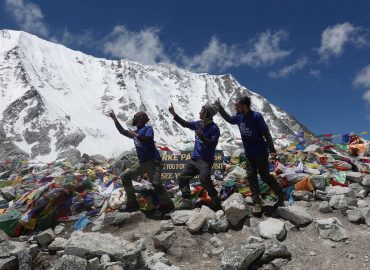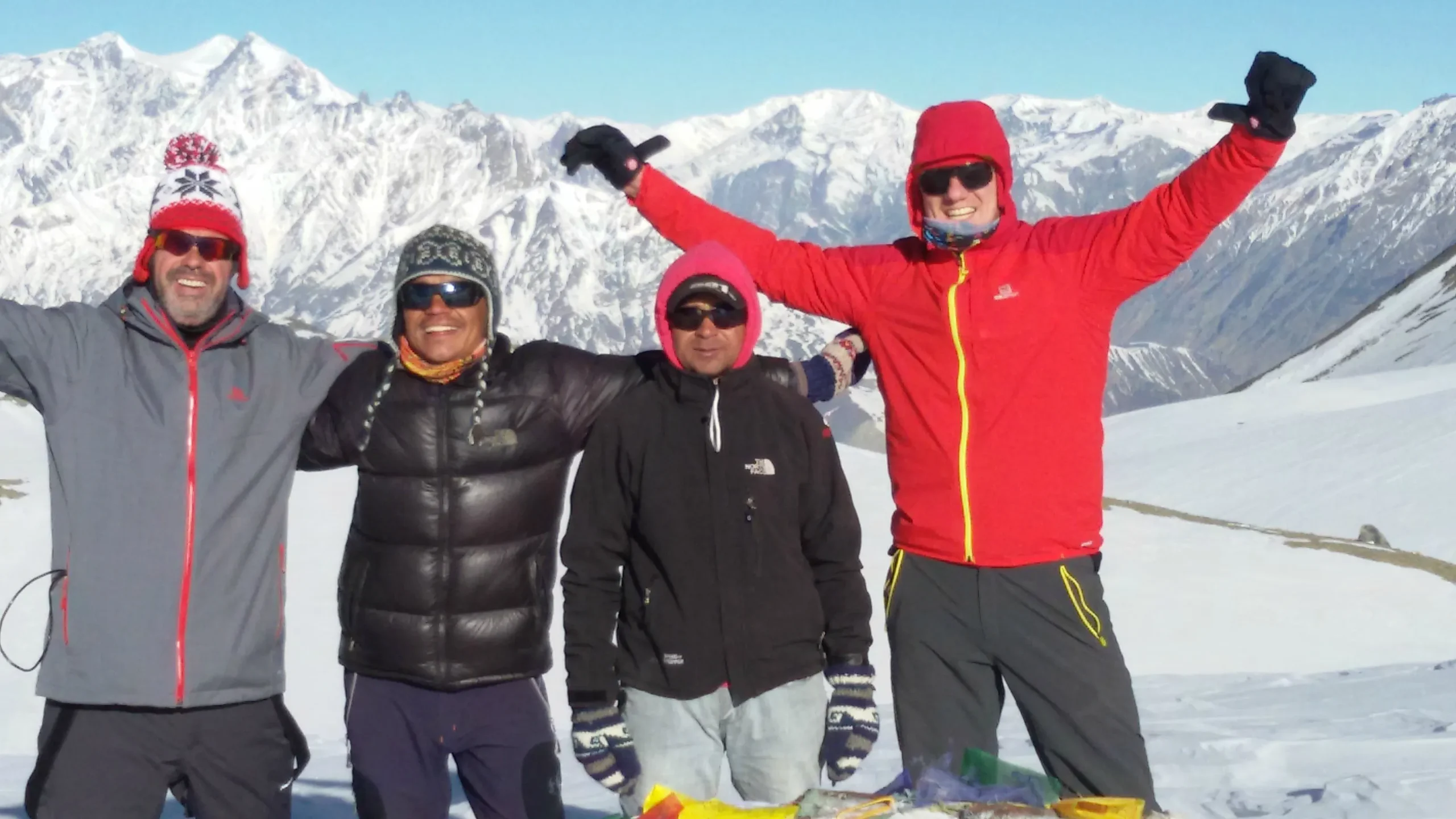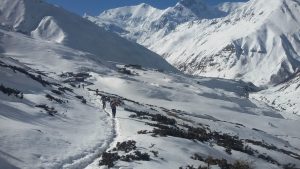Nepal is country known for being the paradise to the hikers ,climber and trekkers.Trekking to Nepal means each trail showcases the different perspective of beauty where Annapurna showcases it fertile land covered with mountains,Everest flaunts its Everest and it’s surrounding Kanchenjunga boats breathtaking scenery,including towering peaks,deep valley,glaciers and surrounding vistas .Although each trek shows the best views here are the list of trek which scene steals the heart of trekkers throughout the trek.
1)Everest Base Camp
Everest Base Camp is a classic trek known for being the highest base camp in the world standing at an altitude of 5,364m in the south and 5,5150m in the north.The trek to Everest base camp is considered as the moderate trek as primarily due to altitude sickness and rugged terrain which can be challenging to beginners .However the majestic view of the himalayas during the trek hits different and make your mind ease and the journey rewarding.
As you embark on the Everest base camp trek you will be treated with the panorama of majestic snow-capped mountain,glacier,lush rhododendron forests painting the hills with the color of red,pink and white during spring season.As you ascend to higher,the landscapes transform into the alpine meadow,with the view of mighty peaks of Everest,Lhotse,Nuptse and Ama Dablam.Passing through the remote mountain valley and the glacial valley you’ll see the raw beauty of the nature.The glacial lakes shimmering into the sunlight,the rugged terrain dotted with the flyers of prayers fluttering in the mountain breeze.
Approaching to the Everest Base Camp the landscapes becomes more dramatic with the towering ice cliffs,glacial moraines,High Altitude desert,Glacial Lakes and Streams,Rocky Moraine Fields etc.Trekking Everest Base Camp means each steps brings the sense of both challenging and the awe,as you navigate towards your ultimate goal of reaching the iconic base camp.Here are the list of Different attraction in Everest Base Camp.
Different attraction in Everest Base Camp
- Mt.Everest
- Kala Patthar Viewpoint
- Sagarmatha National Park
- Namche Bazaar
- Tengboche Monastery
- The world’ highest Base Camp
2)Manaslu Circuit Trek
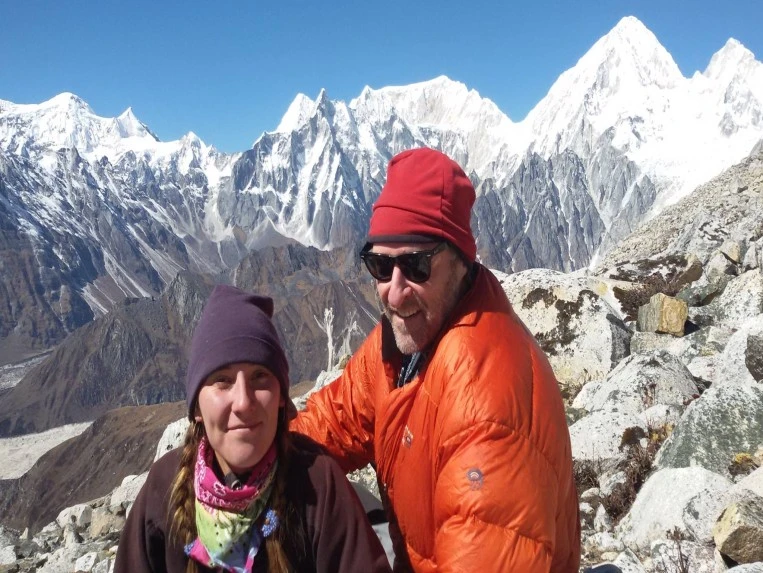
Manaslu circuit trek is unique as well as less crowded trek which showcases the stunning landscapes,diverse culture and challenging terrain.The Manaslu Circuit trek is locate sin the Gorkha district in the northern part of Nepal.The trek encircles the Mt.Manaslu,the eight highest peak in the world.The trek to Manaslu is quite challenging then Annapurna circuit and Everest region trek as the trek is quite longer and the terrain is not well-marked so,its difficult to do the independently and also involves crossing high mountain passes,including the challenging Larkya La Pass at an elevation of 5,100m(16,700 ft).
Trek to Manaslu Circuit means the beauty unfolds at every steps along the trails whether it’s the towering peaks or the lush forest with rhododendron and pine.As you continue the trek you will witness the mesmerizing waterfalls cascades down rocky cliffs,their melodious symphony echoing through the valley.Then the trails leads you through the terraced fields carved into mountain sides,where you will see the local farmers cultivating their fields.
As you reach near the Manaslu base camp you will see the himalayan peaks dominating the skyline with Manaslu,the eight highest mountains in the world,Ganesh Himal,Himlung Himal and the dramatic ridges of the Larkya Massif.
Attraction Places of Manaslu Circuit Trek
- Larke La Pass alt.5130m
- Tsum Valley
- Samagaun
- Pungyen Monatery
- Manaslu Conservation Area
- Birendra Tal
- Manaslu Base Camp
3)Mardi Himal Trek
The Mardi Himal Trek is a hidden gem nestled in the Annapurna region of Nepal,offering the trekkers a unique and less-traveled route to explore.This moderately challenging trek takes you through stunning landscapes including lush forests,charming villages,and rugged mountain terrain.The main highlight of the trek is that the trek takes you to the Mardi Himal Base camp,where trekkers will be rewarded with the stunning views of snow-capped mountain like Machhapuchhre(Fishtail),Annapurna South and Hiunchuli..
As you trek you can expect a variety of landscapes,from terraced fields to dense forests,as you ascend through the different route keep an eye on diverse flora and fauna including colorful rhododendrons blooms in spring season.
As you climb higher on the trail,you’ll walk through beautiful grassy fields where yaks and sheep graze peacefully.These quite meadows give you amazing views of the mountains around you and are great place to relax.You’ll also have to go over tall hills,like Low Camp,High Camp and Mardi Himal Base Camp .From the top of these hills,you’ll see stunning views of Annapurna mountains and valley from the below.One of the highlights of the trek is witnessing sunrise ans sunset from vantage points like Pothana,Low Camp and High Camp.The changing hues of the sky and the golden glow on the snow-capped peaks creates the unforgettable moments for the trekkers.
Attraction Places of Mardi Himal Trek
- Dhampus.
- Pothana
- Deurali
- Forest Camp
- Low Camp
- Badal Danda
- High Camp
4)Annapurna Base Camp
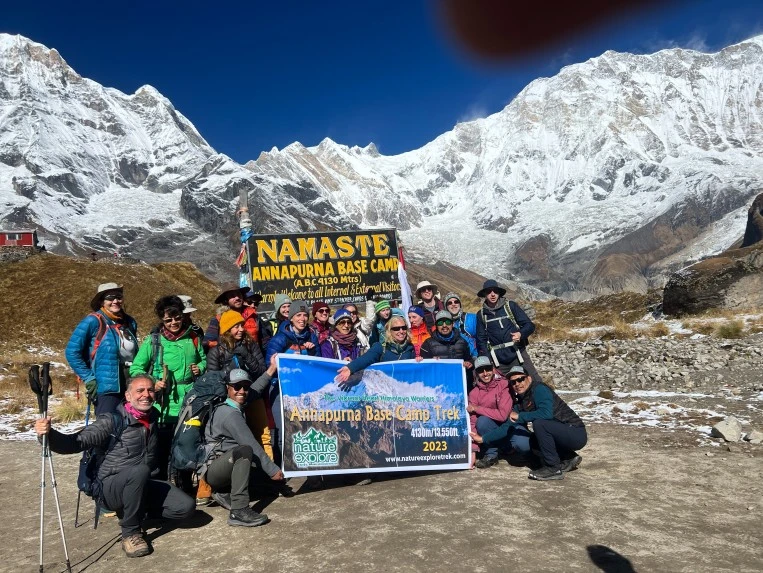
Annapurna Base Camp (ABC)trek is a classical Himalayan adventure which takes trekkers to the heart of Annapurna massif,offering the stunning views of diverse landscapes.The Annapurna Base Camp is situated at ana altitude of about 4,130m(13,550 ft) and is surrounded by the towering snow- peaks including Annapurna I(8,091m) and Machhapuchhre(6,993m).
The trek to Annapurna Base Camp typically begins from Nayapul ,which is a small town near pokhara through the terraced fields eventually leading to Ghandruk a village which is rich in culture and showcases the panoramic mountain backdrop as trek the trial descends into a lush forest of bamboo,rhododendron and oak trees.Along the way you’ll pass by waterfalls and streams with the glimpses of the mountains.As you approach to Machhapuchhre Base Camp ,the landscapes opens-up ,offering the stunning view of Modi Khola valley the trail goes through glacial moraines with the majestic Machhapuchhre becoming visible from the distance.As you reach to Annapurna Base camp you will be rewarded with the unforgettable views of snow capped mountain including:Annapurna I(8,091m/26,545ft),Machhapuchhre(6,993m/22,943ft),Annapurna South(7,219m/23,684ft),Hiunchuli(6,441m/21,132ft),Gangapurna(7,455m/24,457ft),Annapurna III(7,555M/24,787FT) and different other peaks .
The ABC trek takes you through a diverse range of Landscapes from terraced field and subtropical forests to alpine meadows and glacial valley .Each day of trek brings out the new scenery and terrain .The Annapurna region is home to a rich diversity of flora and fauna.While trekking you may encounter different species of birds including cHimalayan Monal and Pheasants,wildlife like Langur monkey,deer ,snow leopard and many other.
Attraction places of ABC trek
- Nayapul
- Ghandruk Village
- Chhomrong
- Machhapuchhre Base Camp(MBC).
- Deurali
- Himalayan Hot Spring.
- Annapurna Base Camp(ABC)
- Glacial Moraines.
5)Gokyo Lake
The Gokyo Lake trek is a remarkable journey through the Everest region of Nepal,located in the Sagarmatha National Park.The trek is named after the series of turquoise-colored glacial lakes known as the Gokyo Lake and these pristine alpine lakes are among the highest freshwater lakes in the world and known for its beauty.
One of the major highlight of this trek is the ascent of Gokyo Ri(5,357m/17,575ft).From the summit of Gokyo Ri,trekkers are rewarded with the panoramic views of Mt.Everest,Lhotse,Makalu,Cho Oyu, and other surrounding peaks.The sunrise view from Gokyo-Ri is particularly beautiful.The trek often includes a crossing of Renjo La Pass(5,360m/17,585 ft),a high mountain pass that offers the stunning view of Everest and the surrounding Himalayas.Gokyo Lake trek takes place within the boundaries of Sagarmatha National Park,a UNESCO World Heritage Site known for its diverse flora and fauna.SO the trekkers will have the opportunity to encounter wildlife such as musk deer ,Himalayan Thar and various bird species
Along the trekking route ,Trekkers will have the opportunity to experience the unique culture and hospitality of Sherpa people ,who inhabit the Khumbu region.You’ll see different monasteries,Payers flag adorned with the symbol and prayers.
Attraction places of Gokyo Lake trek
- Renjo La Pass
- Gokyo Ri
- Sagarmatha National Park
- Gokyo Lakes
- Ngozumpa Glacier
6)Everest three high pass
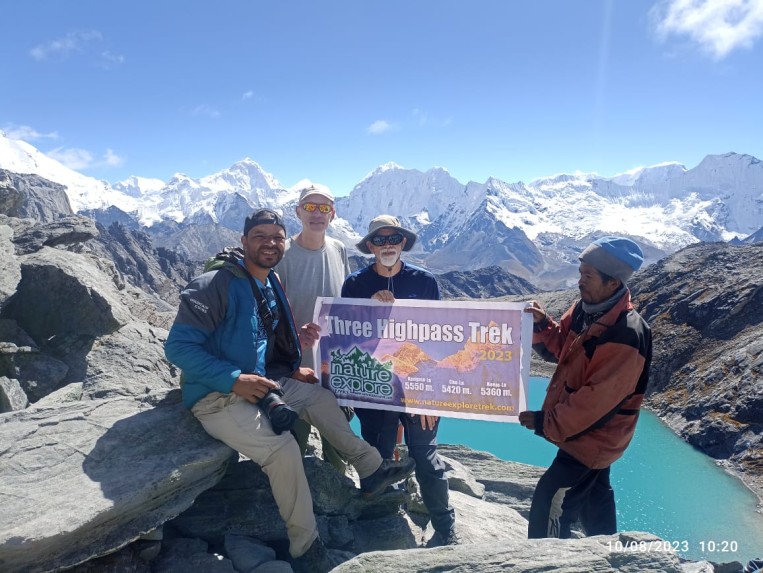
Everest Three high pass is the challenging trek in the Everest region.On this trek you will travel over three difficult passes which are Kongma la(5,535m),Cho La(5,420m)and Renjo La(5,360m).The trek will reward you with the different hidden beauties of the Everest region .
On the way you will see the different mountains which are over 8000m including:Ama Dablam,Pumori,Cholatse,Khumbutse,Nuptse and Lhotse.While you are in the trek you’ll be rewarded with different breathtaking Himalayan Panoramas.The pathway runs through thick woodlands in the bottom portion,where you can witness the diverse vegetation.You will cross the tree line and reach the alpine regions as you ascend in attitudes.The trails gets rough and snowy.
The trek provides numerous vantage points to view Mount Everest,the highest peak in the world
The trek passes through diverse landscapes,including lush rhododendron forest,alpine meadows,rocky,moraines and glacial valley.Along the trek you’ll pass through traditional Sherpa villages like Namche Bazar,Tengboche Monastery
Attraction Places of the trek
- Mountain Everest
- Gokyo Lakes
- Renjo La Pass
- Cho La Pass
- Kongma La Pass
- Kala Patthar
7)Ghorepani Poonhill Trek
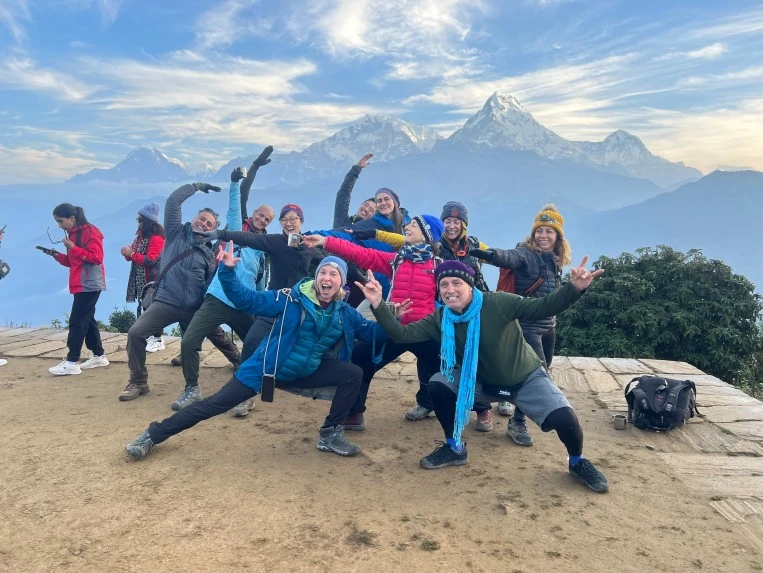
Ghorepani Poonhill trek is another classic short and easy trek located in the Annapurna region of Nepal.The trek can be completed within 5 days ,depending upon the route and your pace.Ghorepani Poon Hill trek is known for being the kids friendly trek offering the stunning views,diverse landscapes and cultural encounters with local communities.The trek is famous for sunrise view from Poon Hill(3,210m/10,531ft).From the Poonhill you’ll see the stunning view of different mountains including:Dhauligiri(8,167m/26,795ft),AnnapurnaI(8,091m/26,545ft),Annapurna South (7,219m/23,684ft),Machapuchare(6,993m/22,943ft),Nilgiri(7,061m/23,166 ft),Hiunchuli(6,441m/21,132 ft) and many more.
The trek passes through Lush rhododendron forests,especially vibrant during spring season(March to April).The colorful blossoms of rhododendron add to the beauty of the landscapes,creating picturesque setting for trekkers to enjoy.As you hike through lower elevation,you’ll encounter terraced fields carved into hills by local farmers.These terraces are used for growing different crops.Along the trek,you’ll pass through charming Gurung villages such as Ghorepani,Tadapaniand Ghandruk.You’ll cross several mountain streams and rivers along the trek,with crystal-clear waters flowing from the high himalayas.Through out the trek each day will showcases the different stunning views of surrounding valley,hillsides and distant mountain ranges.In terms of trail condition of Ghorepani Poon Hill trek is generally good and well-maintained,making it accessible to trekkers of various skill levels.
Attraction Places of the trek
- Poonhill viewpoint
- Ghorepani Village
- Natural Hot Spring
- Terraced fields and waterfalls
8)Annapurna circuit
The Annapurna Circuit is a classical trekking route located in the Annapurna region of Nepal.It is renowned for its stunning mountain scenery ,diverse landscapes,rich cultural heritage and challenging trek.Annapurna Circuit trek is a long distance trek which is voted as the best long-distance trek in the world.The trek crosses two different river valleys and encircles the Annapurna Massif.The trek reaches its highest point at Thorung La pass (5416m/17769ft).Trekkers hike the route anticlockwise,so that way the daily altitude gain will be slower and crossing the high Thorong La pass will be quite easier and safer.
During the trek trekkers will see the different mountain ranges at close distance and they are Annapurna Massif(Annapurna I,IV)Dhauligiri,Machhapuchhre,Manaslu,Gangapurna,Tilicho Peak,Pisang Peak and Paungda Danda.The trail passes along the paddy fields and into Subtropical forest,past different waterfalls,big cliffs and through different charming villages.Along the way ,there are several natural hot spring where trekkers can relax their tired muscles after a long day of hiking .The most famous hot springs are located in Tatopani
Attraction places of the trek:
- Thorong La Pass
- Manang
- Muktinath
- Jomsom
- Tatopani
- Thorong Phedi
- Ghorepani
- Pokhara
- Nayapul
9)Kanchenjunga circuit Trek
Kanchenjunga circuit Trek is a challenging and breathtaking trekking route that encircles the majestic Kanchenjunga,The highest mountain in the world.It is located in the eastern part of Nepal and is paradise for trekkers and adventure seekers.The highest point of the trek is the Pangpema Base Camp,situated at an altitude of around 5,140m(16,864ft),resulting proper acclimatization to prevent altitude sickness and other related health issues.
Kanchenjunga region is renowned for its stunning natural beauty and rich biodiversity.Trekkers can witness a variety of flora and fauna , including rhododendron forests,aline flowers and rare himalayan wildlife such as snow leopards,red panda and musk deer.As trekkers ascend higher into mountain,you’ll come across beautiful grassy fields where yaks graze,colorful wildflowers bloom and crystal-clear streams flow.These peaceful meadows are perfect spots to take break and enjoy scenery.During the trek ,you’ll walk through valley carved by ancient glaciers.These valleys are filled with huge mounds of rocks.
The kanchenjunga Circuit Trek involves crossing several high mountain passes,including the challenging Sele La Pass(4,290m)and Sinelapche La Pass(4,646m).from these vantage points,trekkers are rewarded with panoramic views of surrounding Himalayan peaks and valley.The trek offers unparalleled views of Kanchenjunga Massif,which includes four of the world’s tallest peaks:Kanchenjunga Main(8,586m),Kanchenjunga West(8,505m),Kanchenjunga Central(8,482m) and Kanchenjunga South (8,494m)
Attraction Places of Kanchenjunga region.
- Kanchenjunga Base Camp(Pangpema and Oktang).
- Ghunsa Village
- Kanchenjunga Conservation Area.
- Yalung Glacier.
- Tiger Hill
- Kanchenjunga Waterfalls
- Local Monasteries.
Nepal offers some of the most scenic treks in the world,each with its own unique beauty and charm.From the majestic peaks of Everest to the Annapurna.Whether you’re seeing the highest peaks or walking through peaceful meadows.Nepal’s treks are unforgettable.With colorful flowers,friendly village and incredible views these treks capture the heart of adventures everywhere.
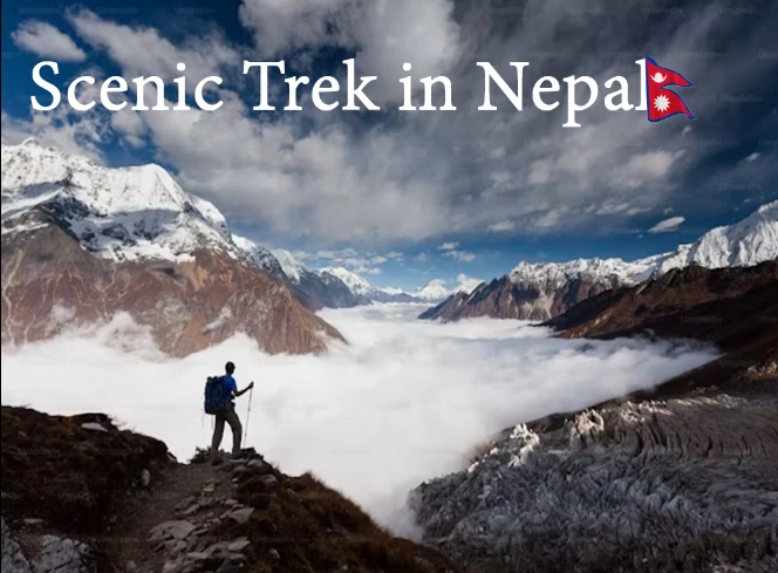
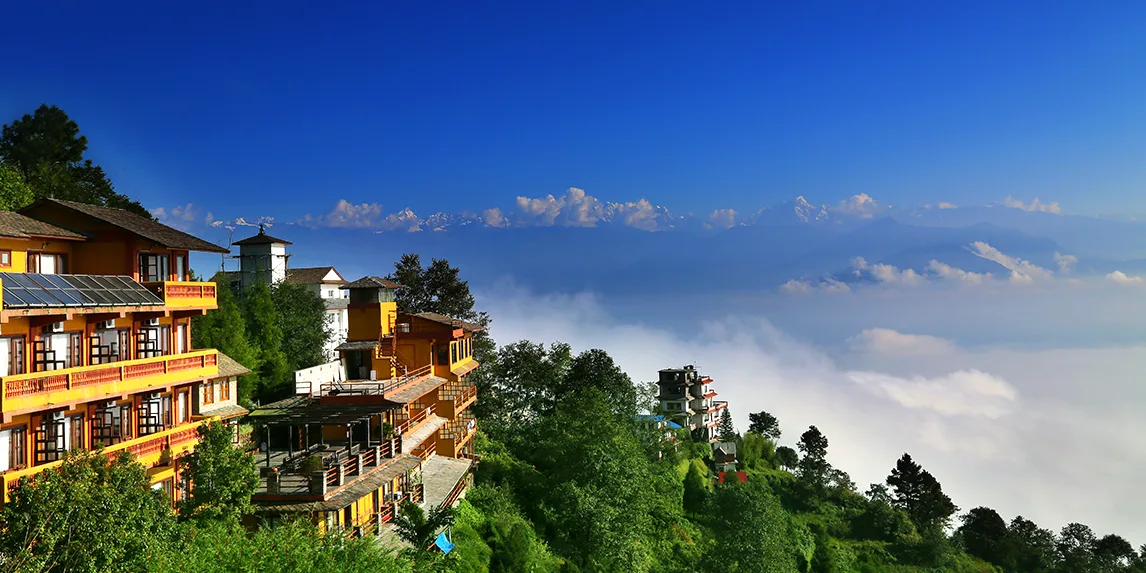

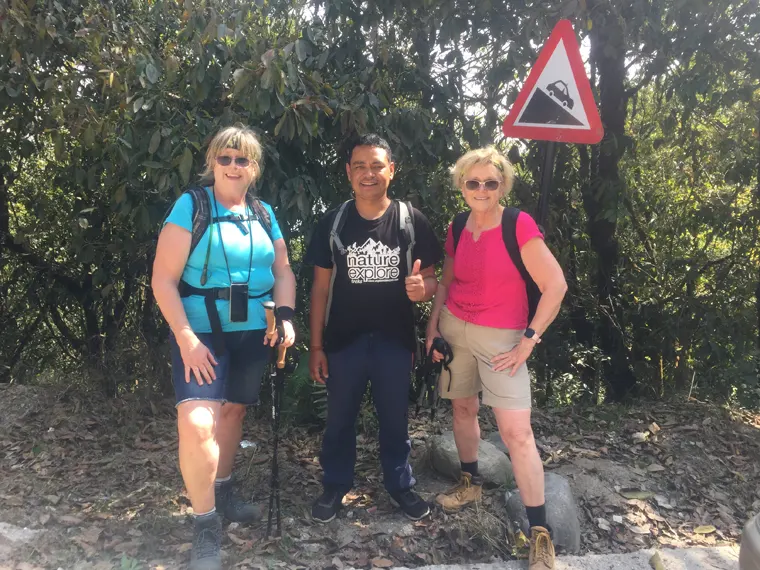
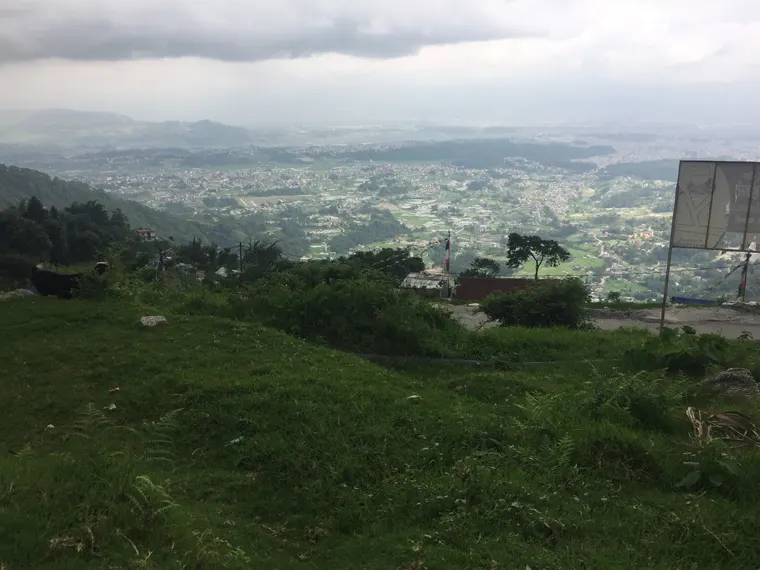
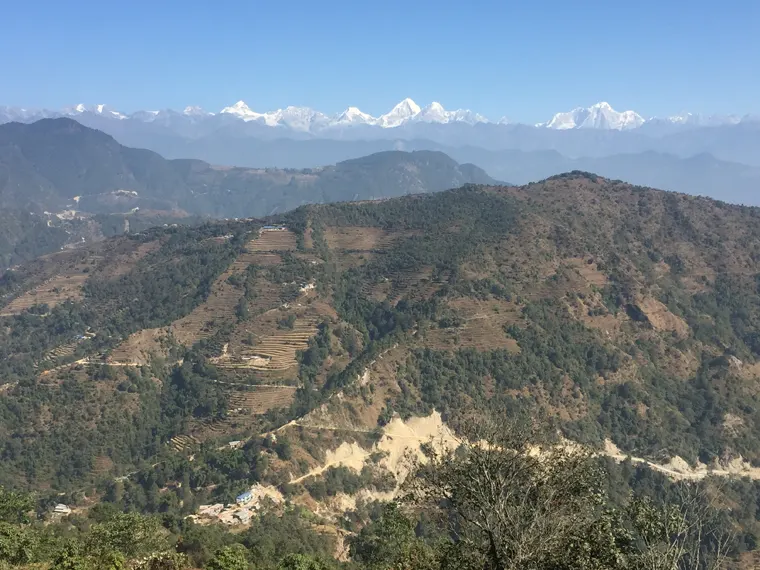
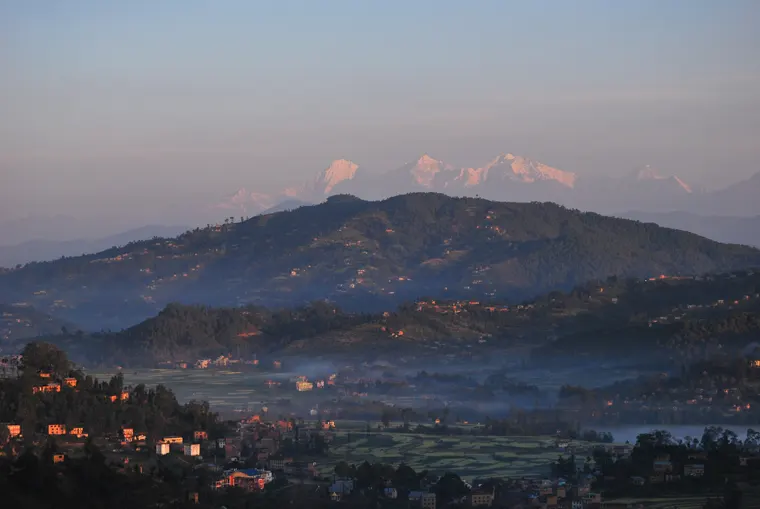
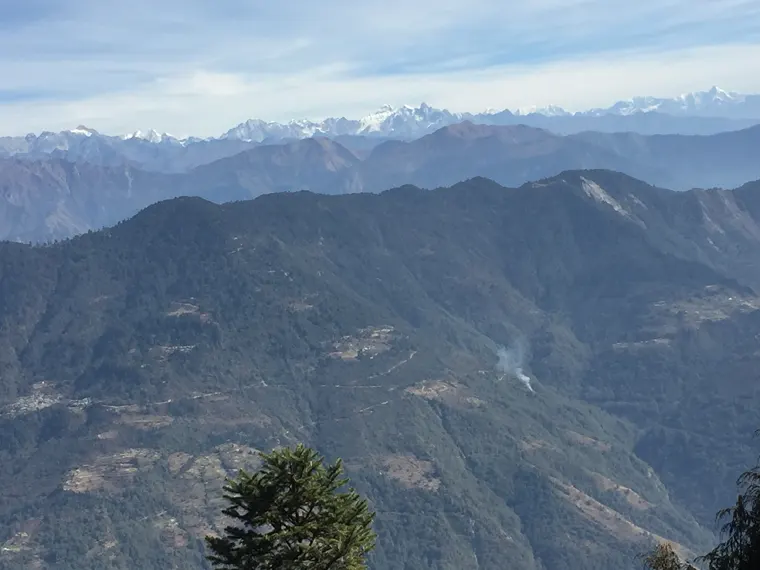
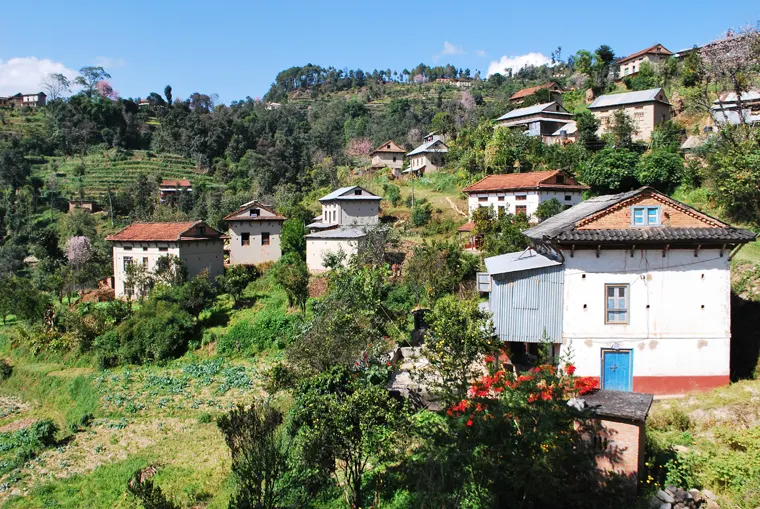
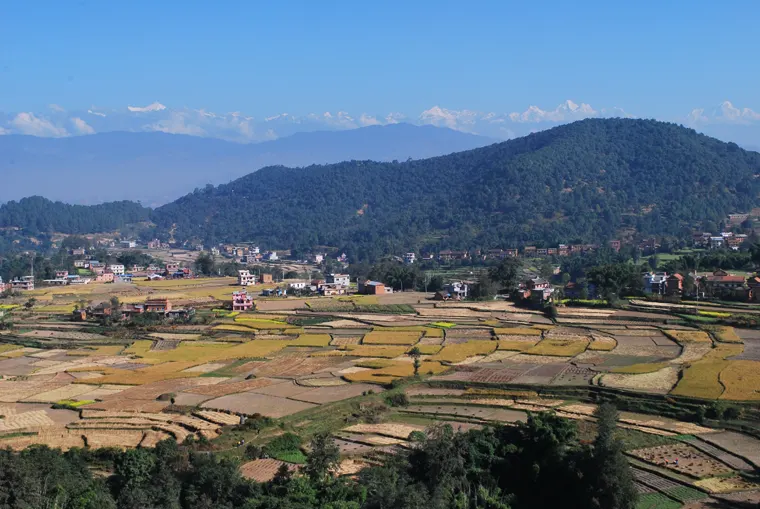
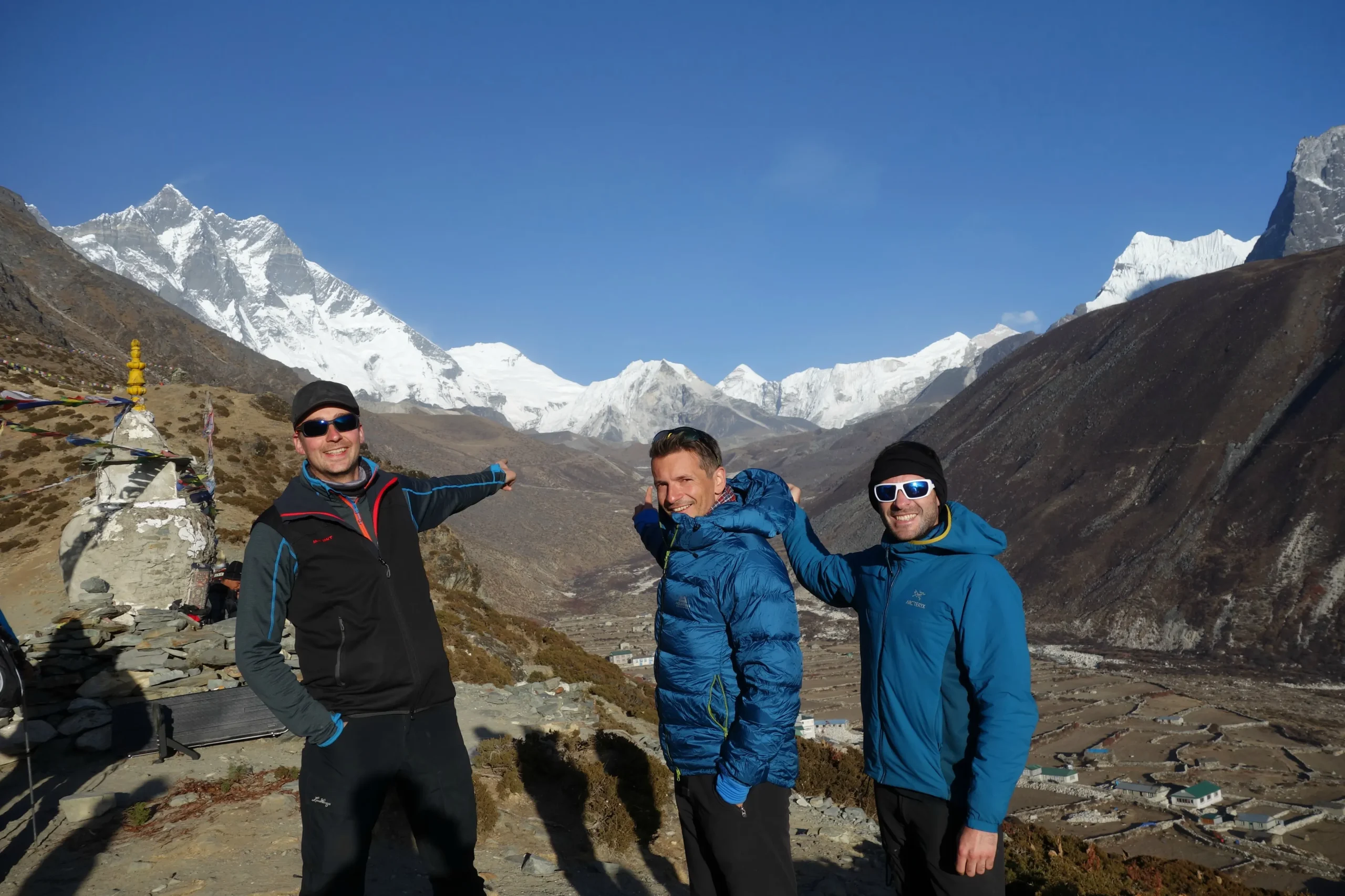
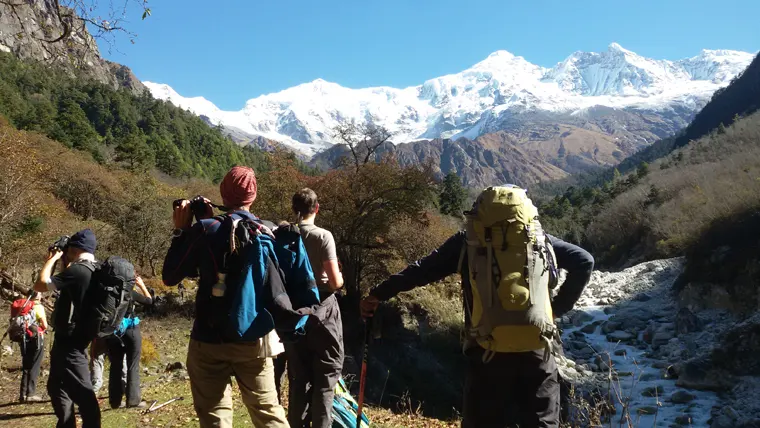
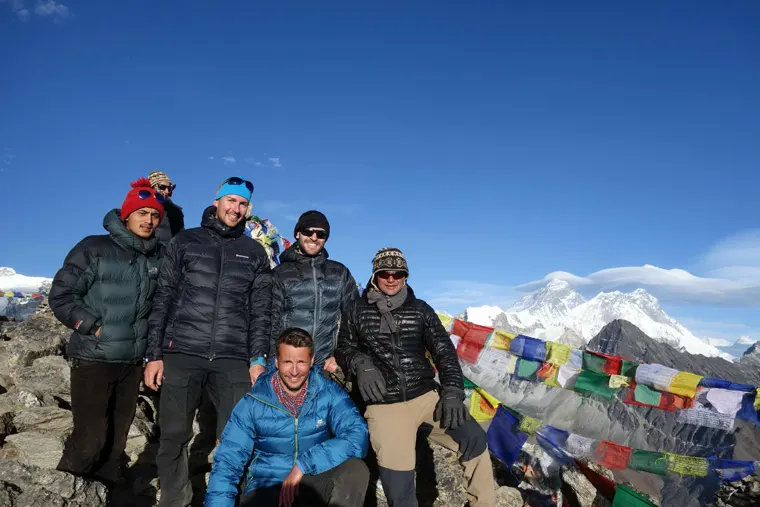
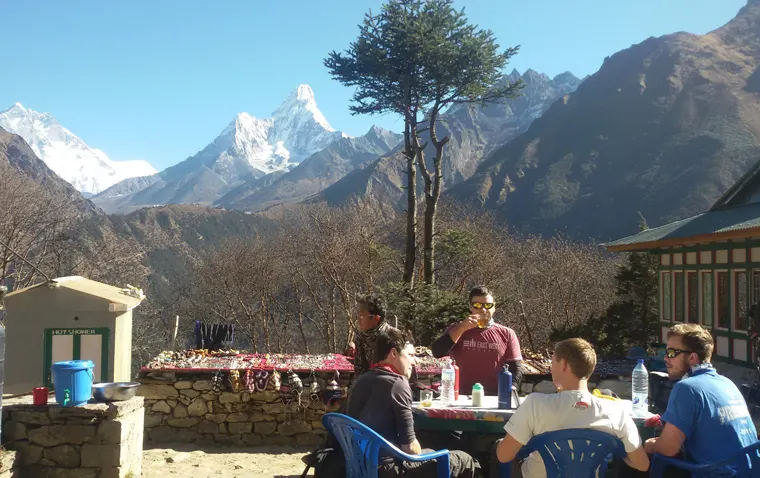

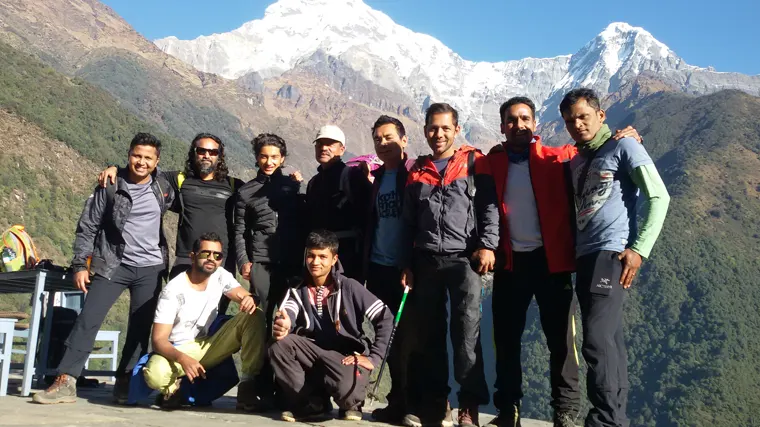
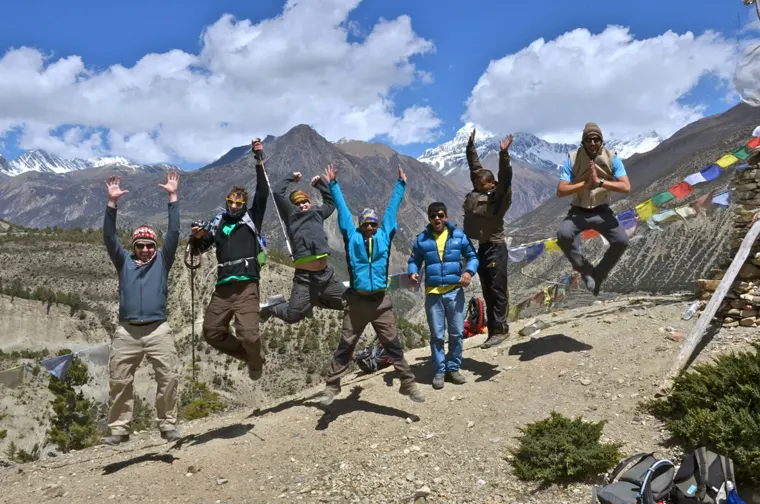
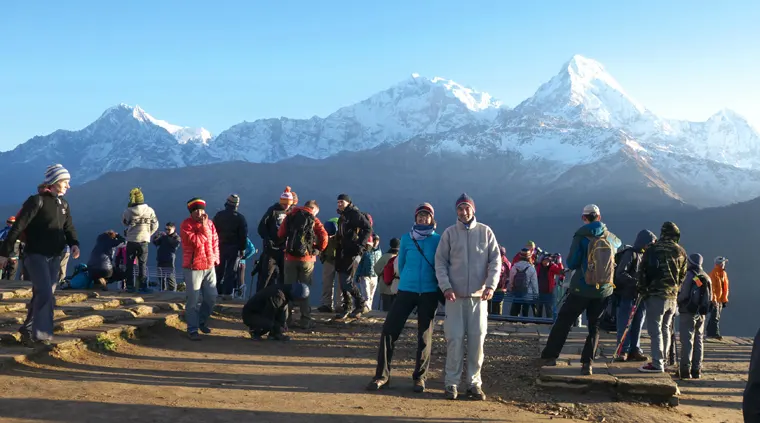
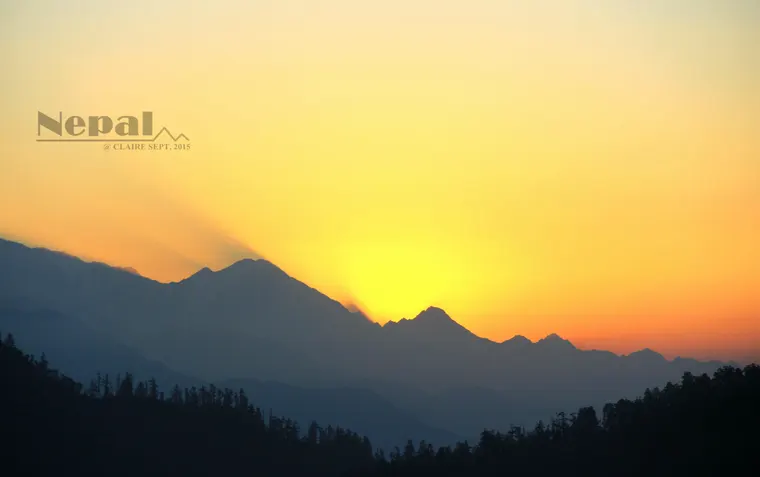
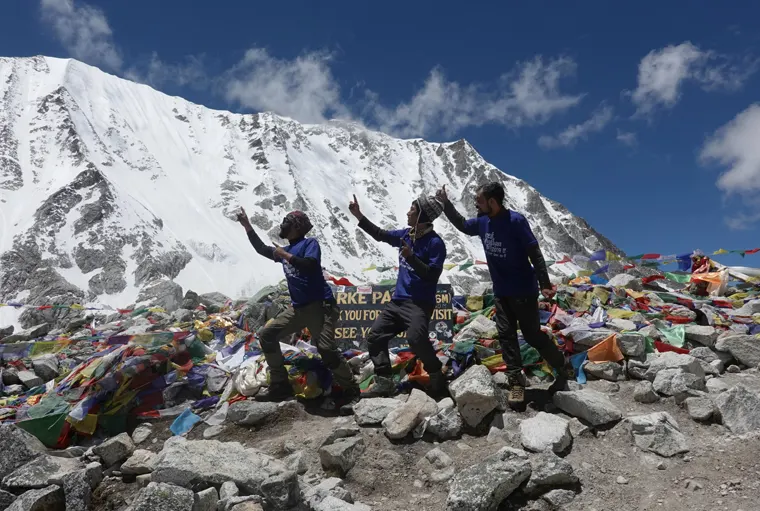
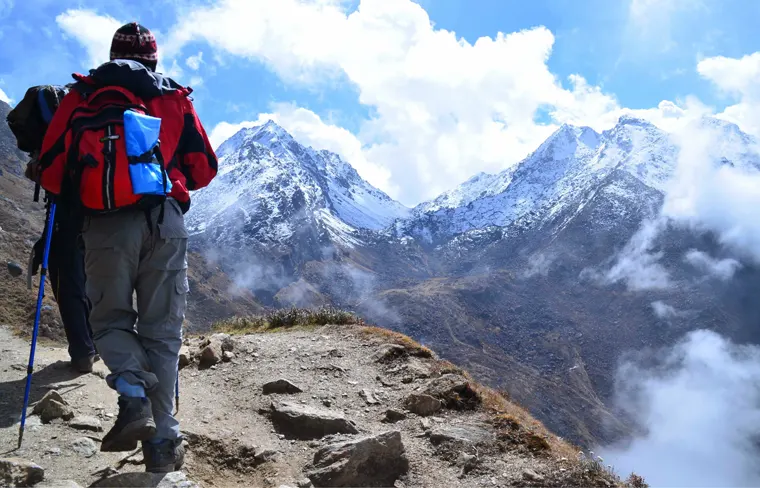
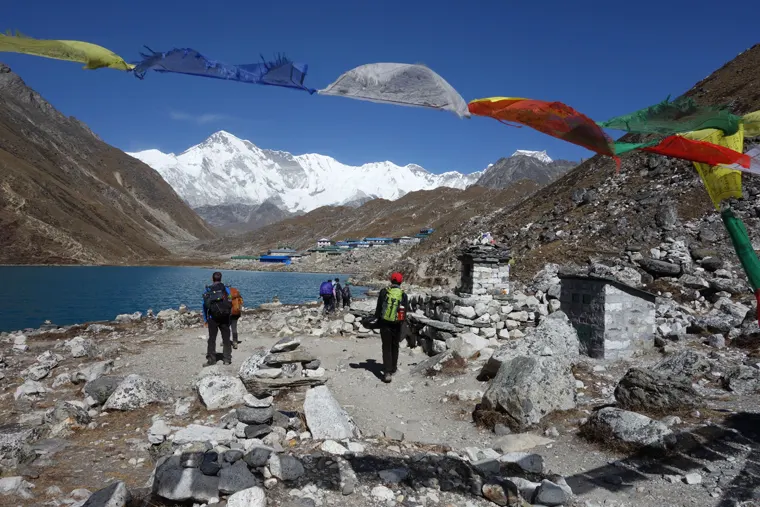
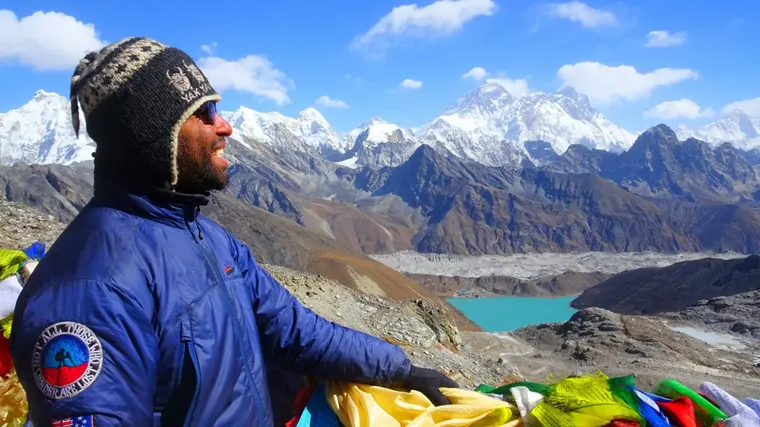
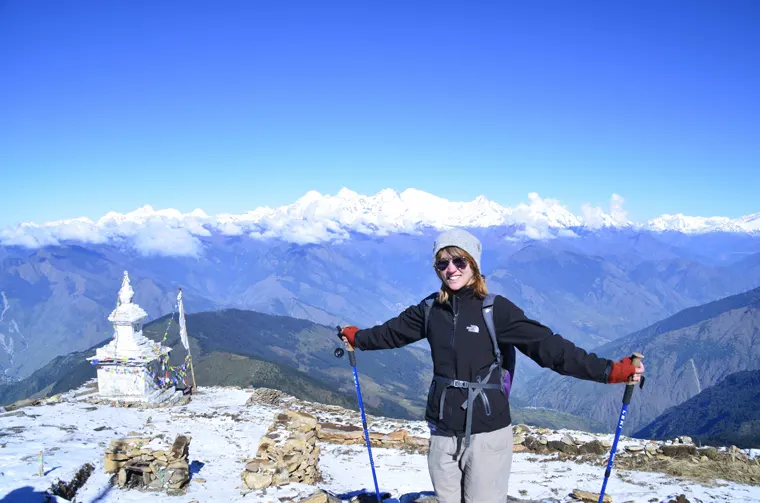
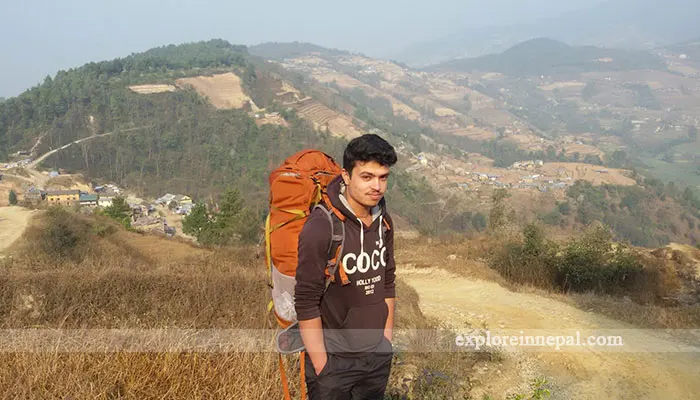
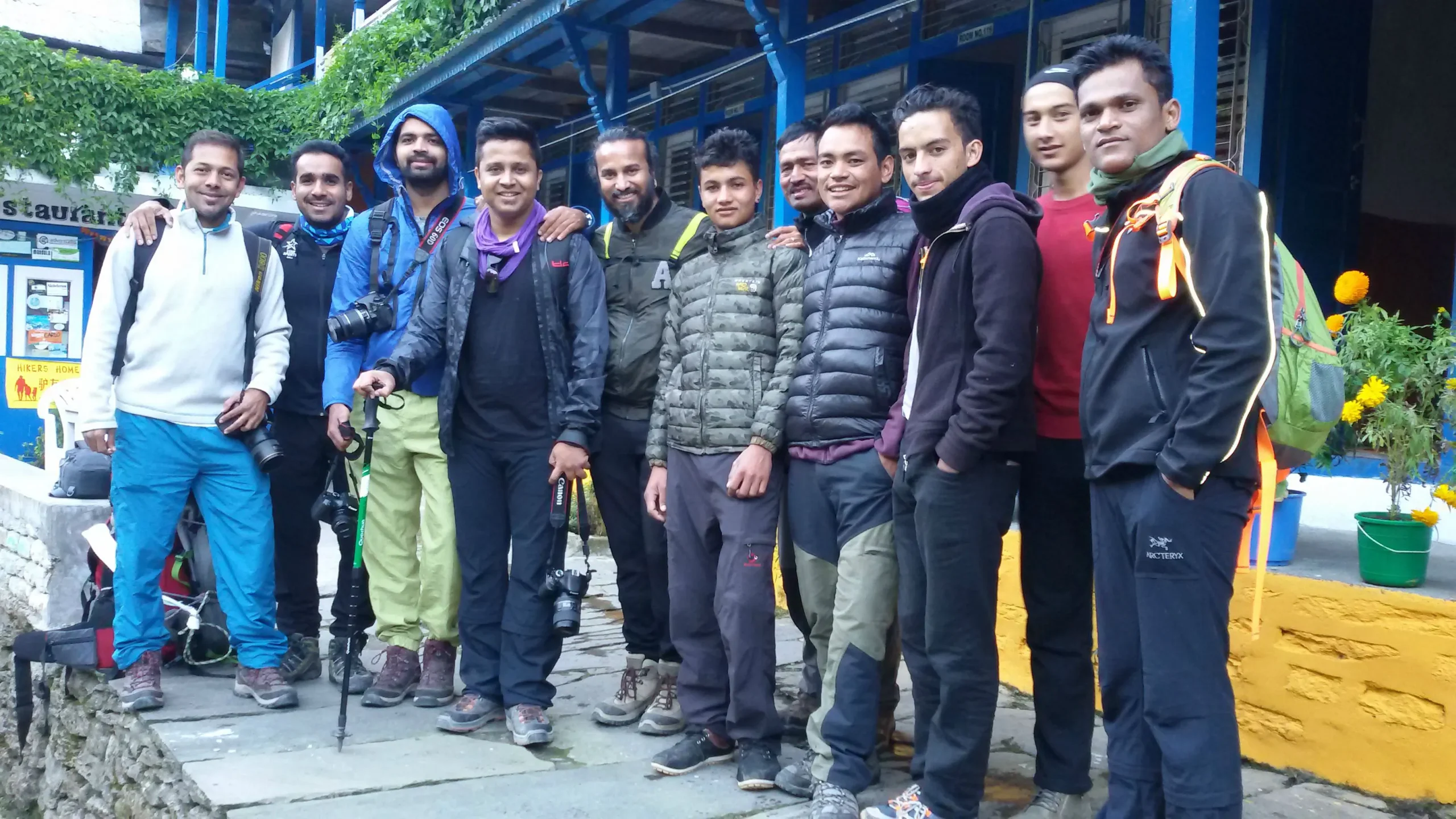
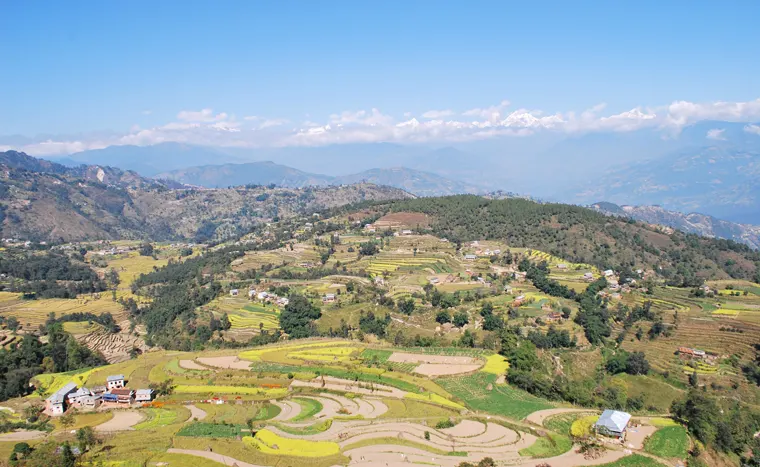
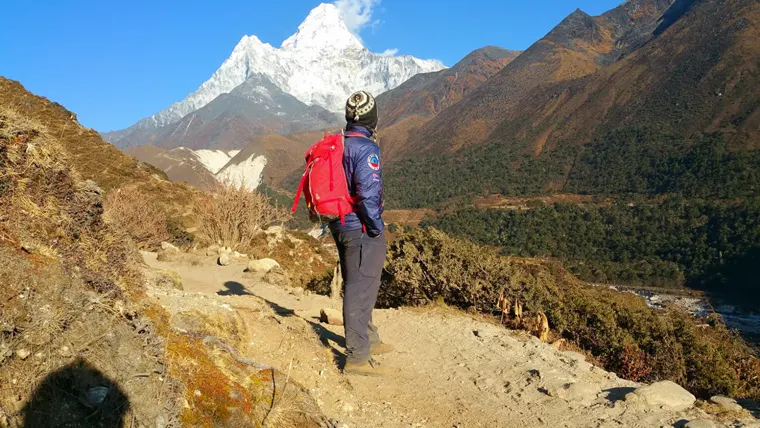
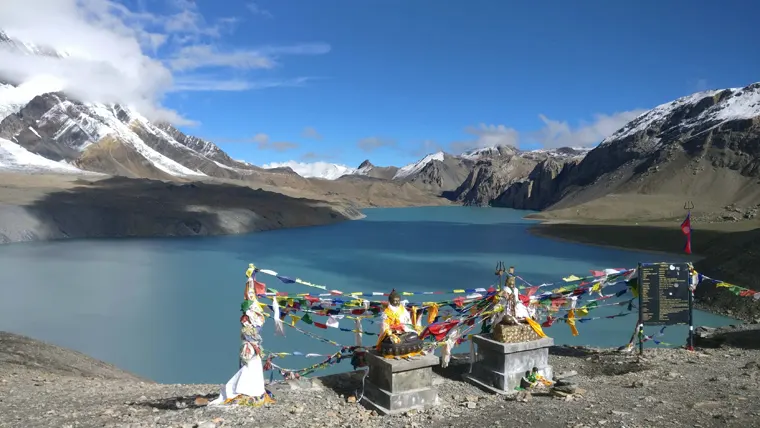
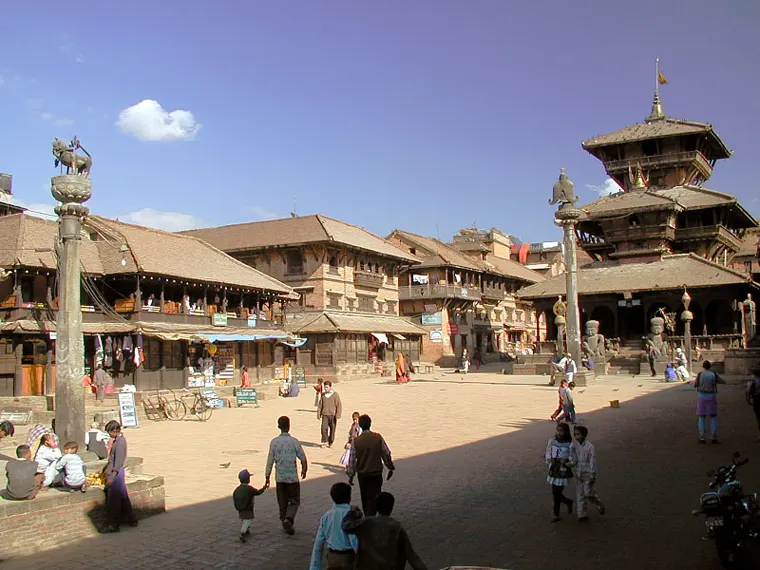
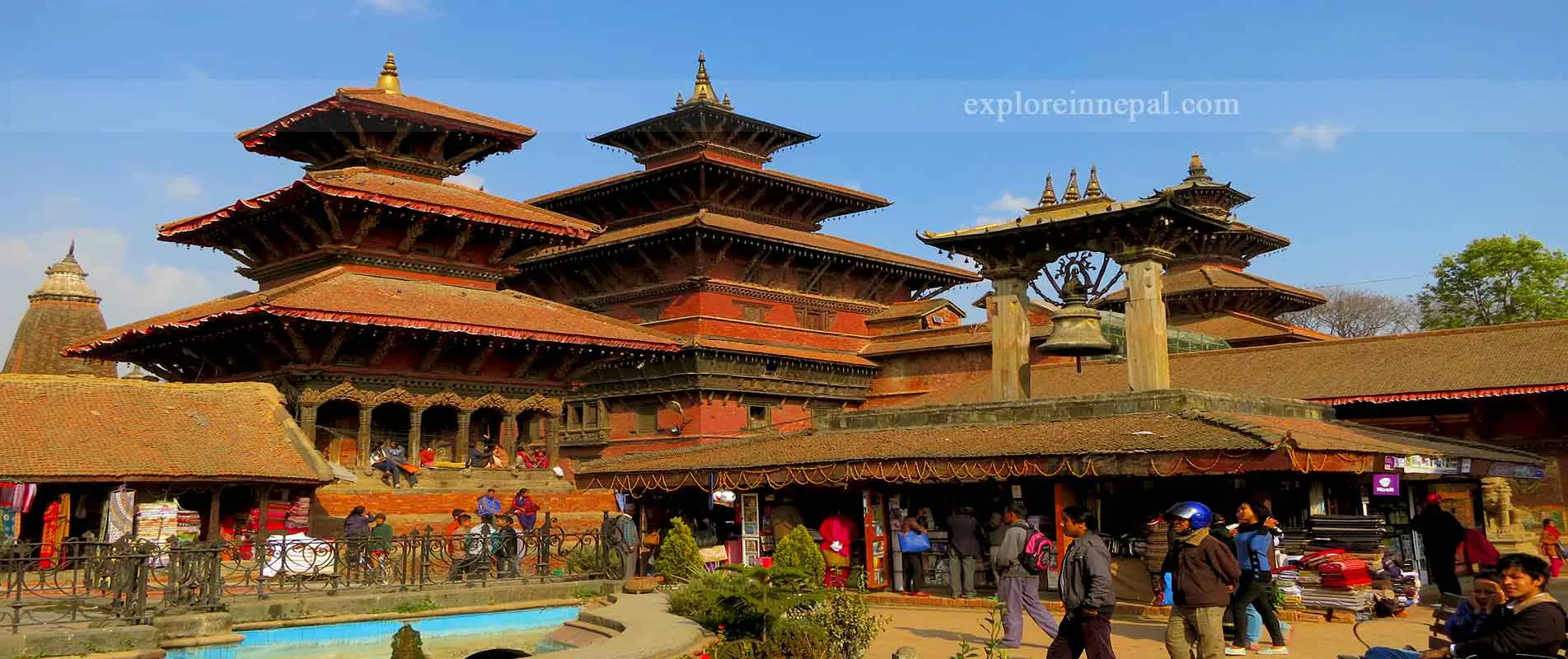
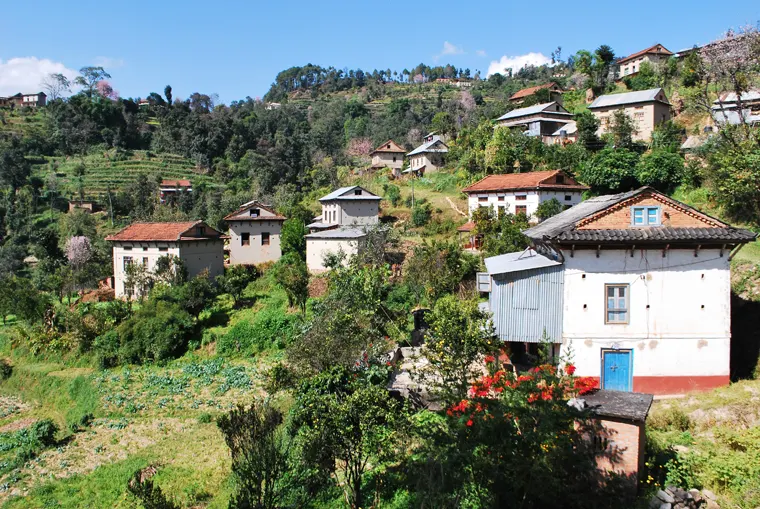
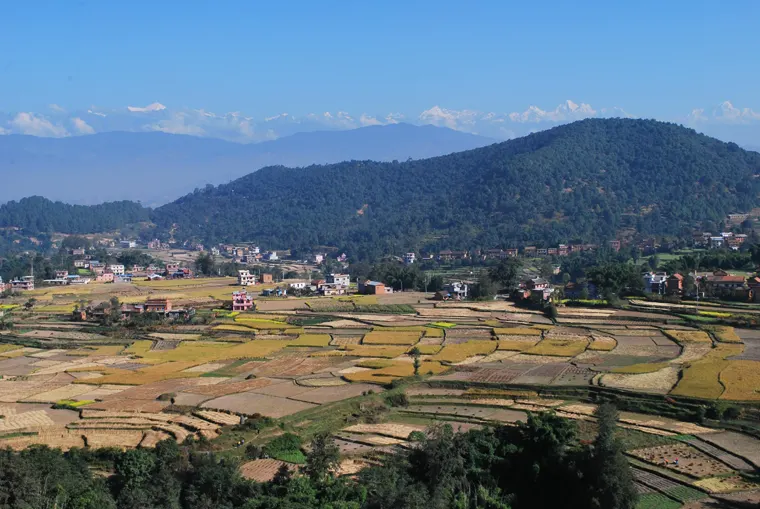
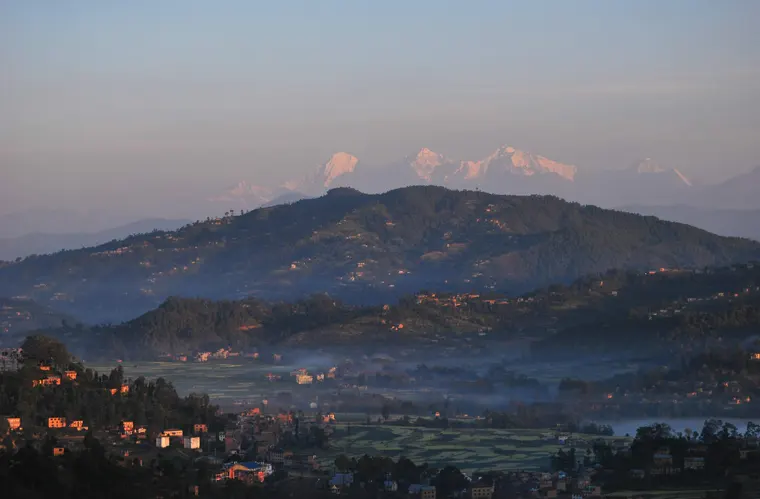
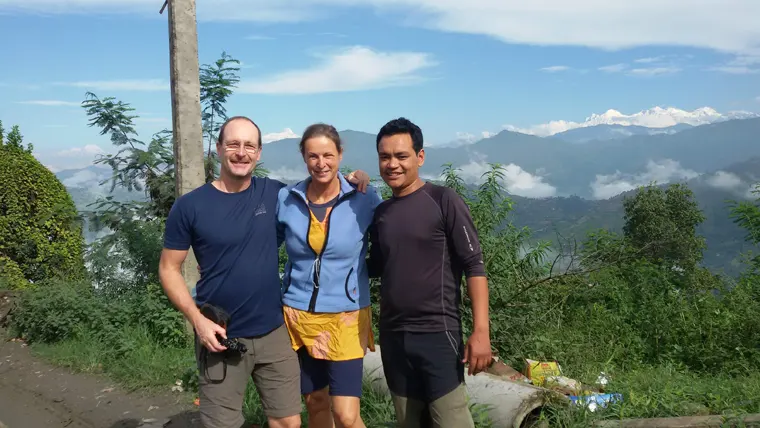
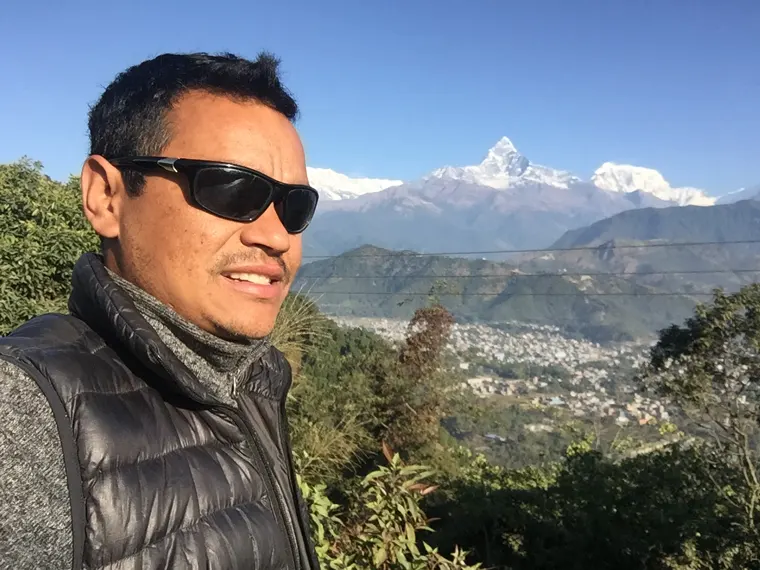
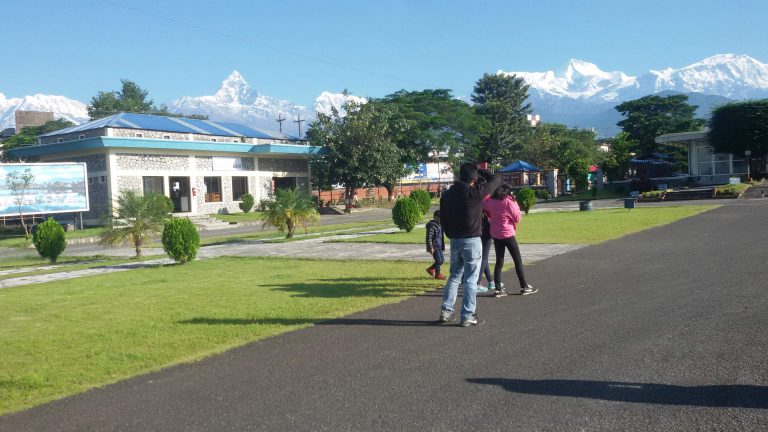
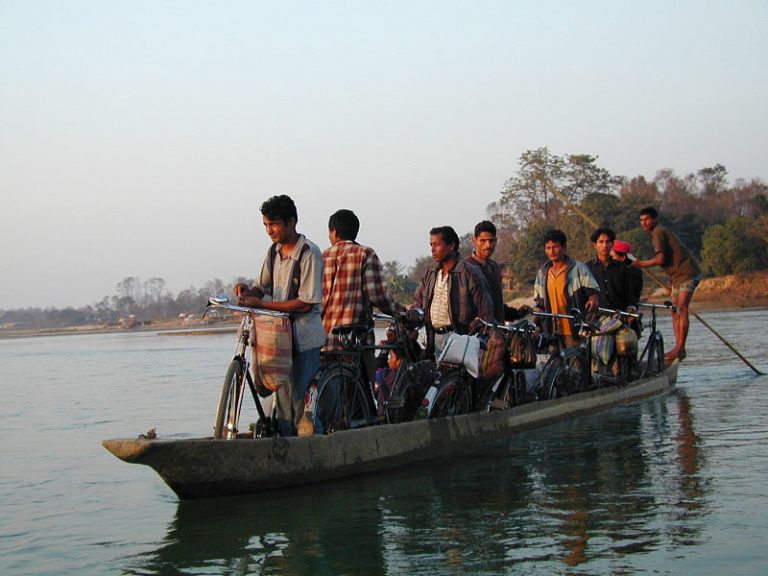
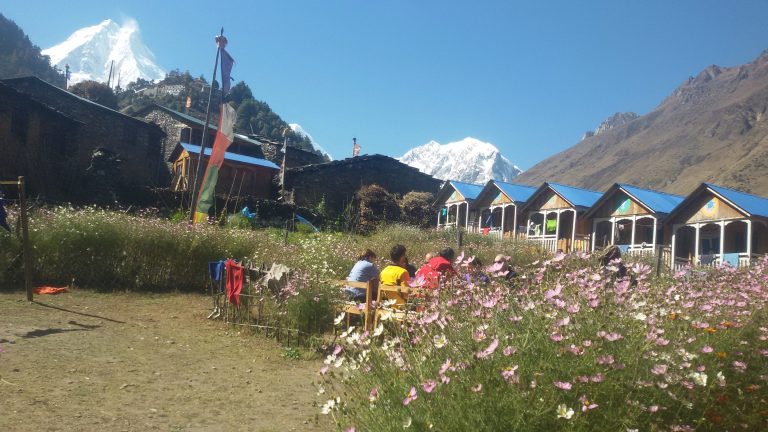
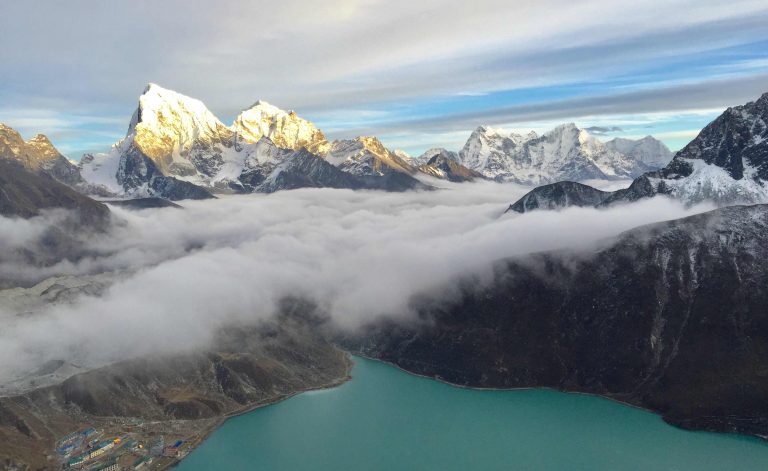
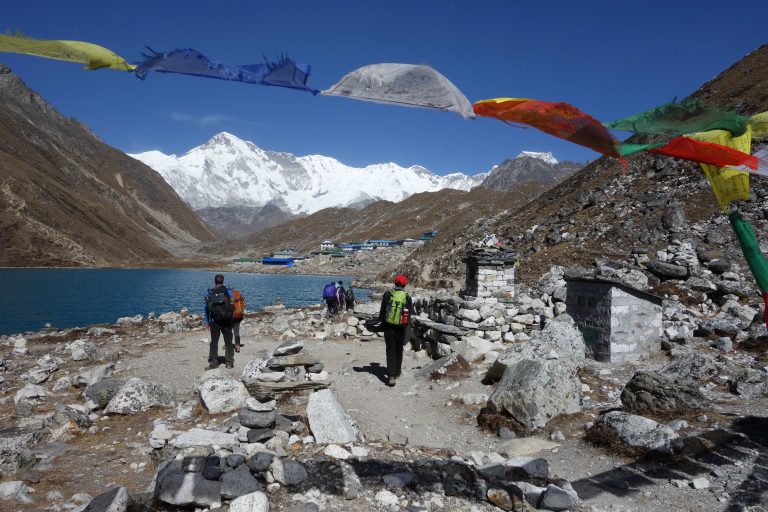
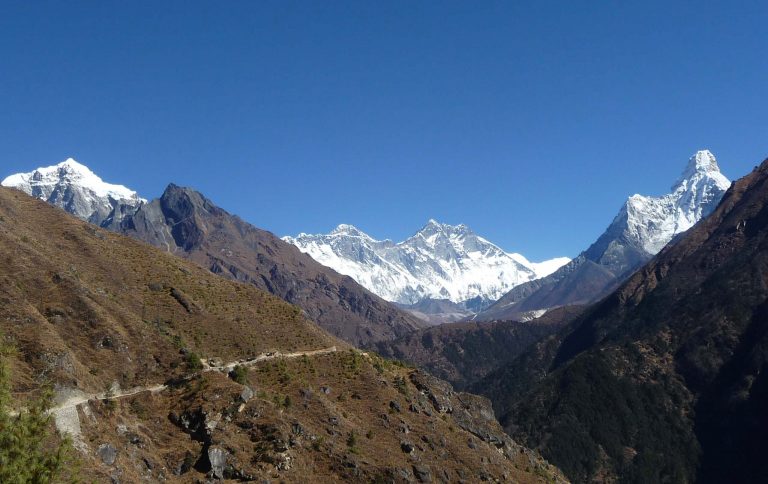
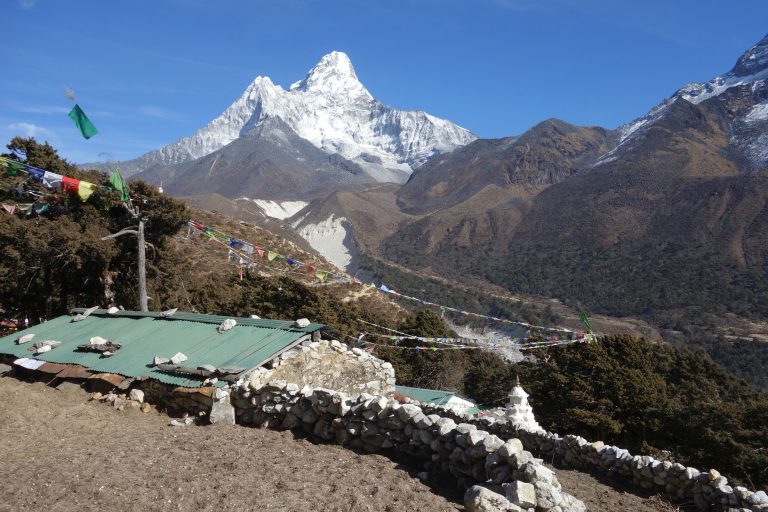
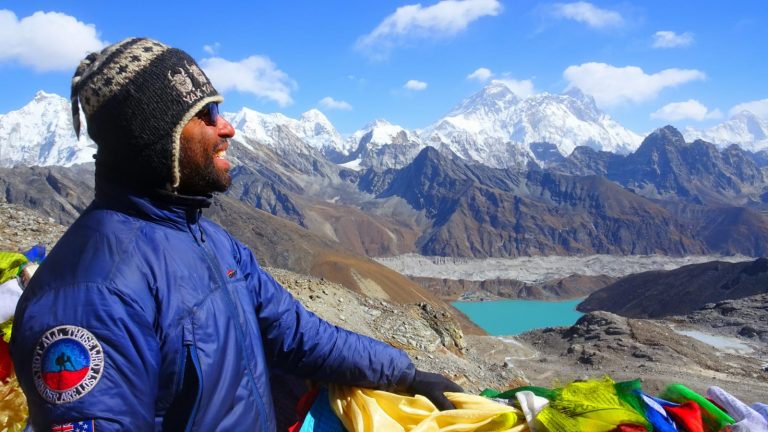
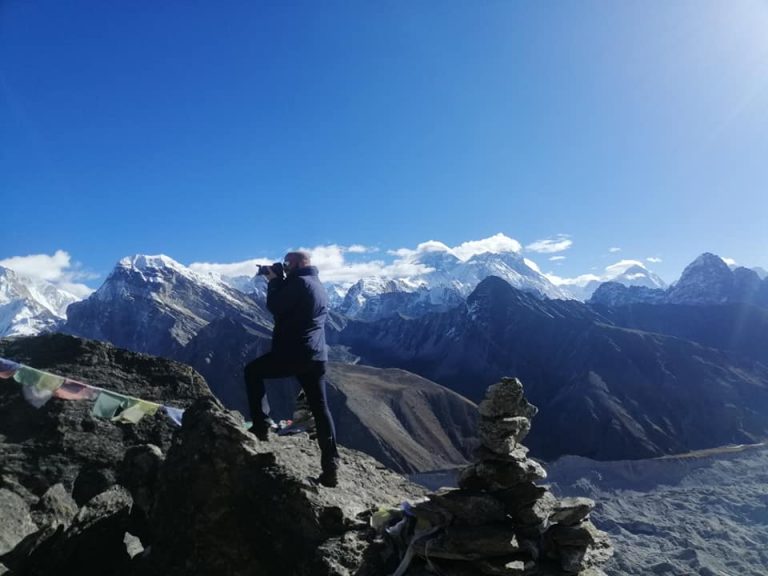
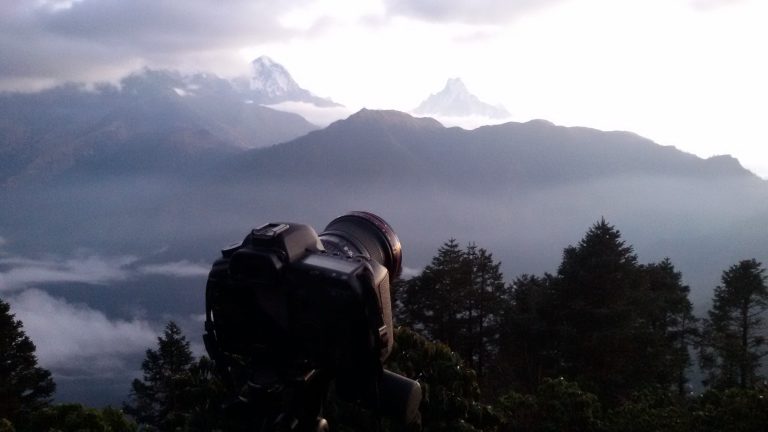
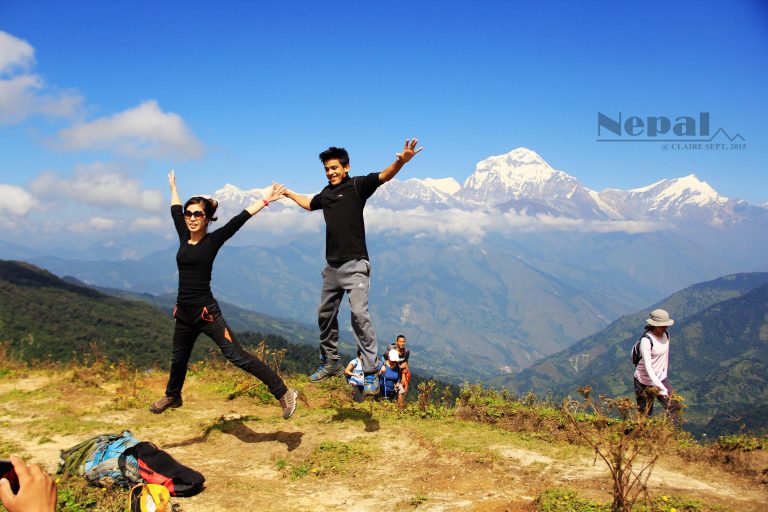
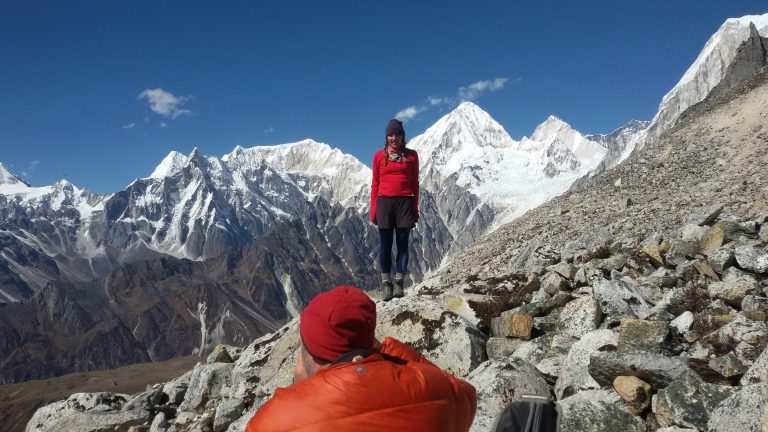
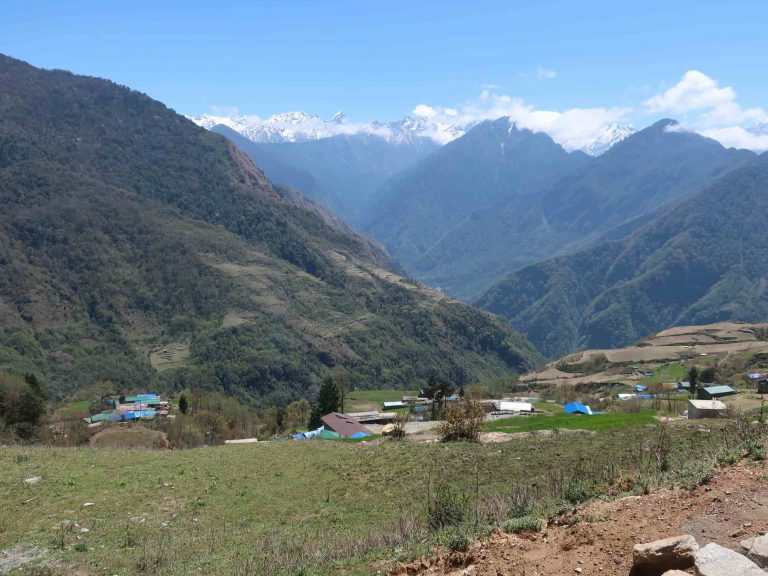
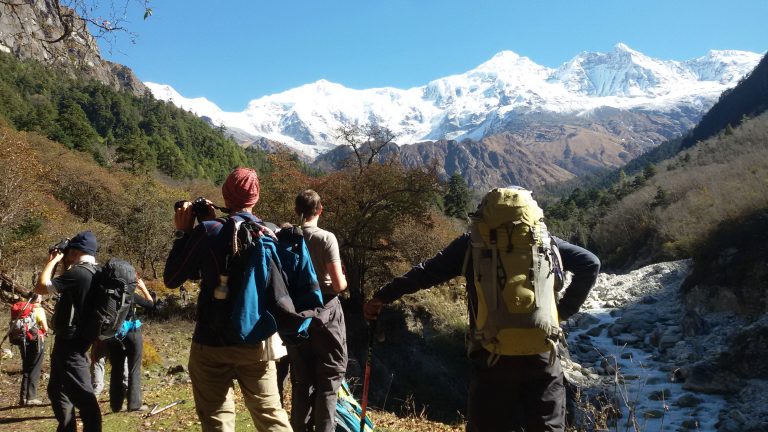
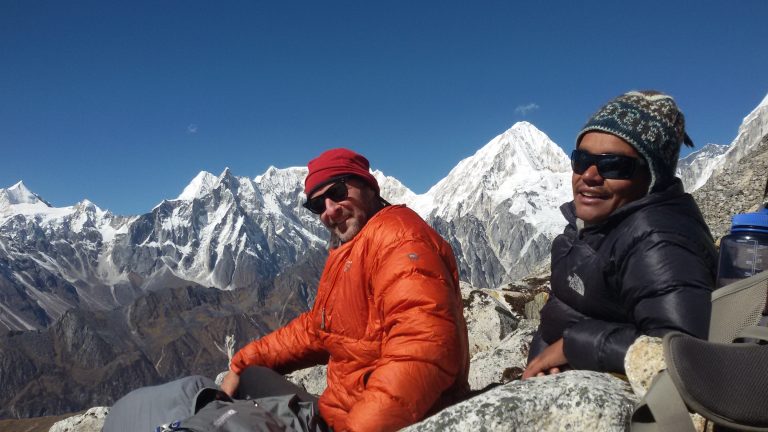
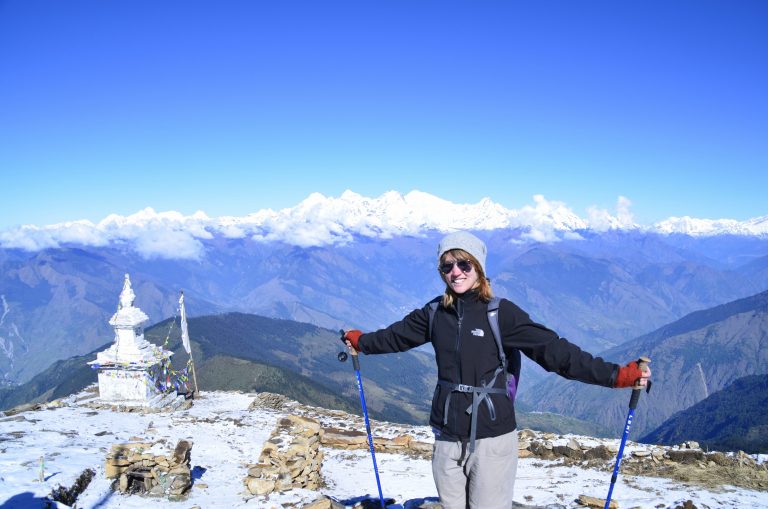
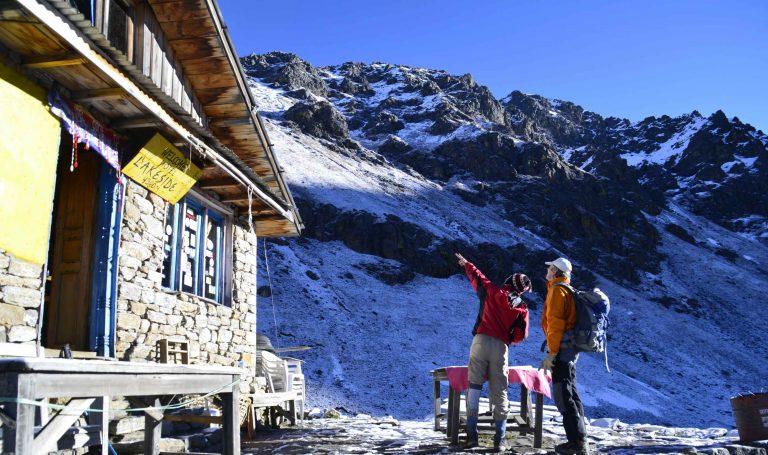
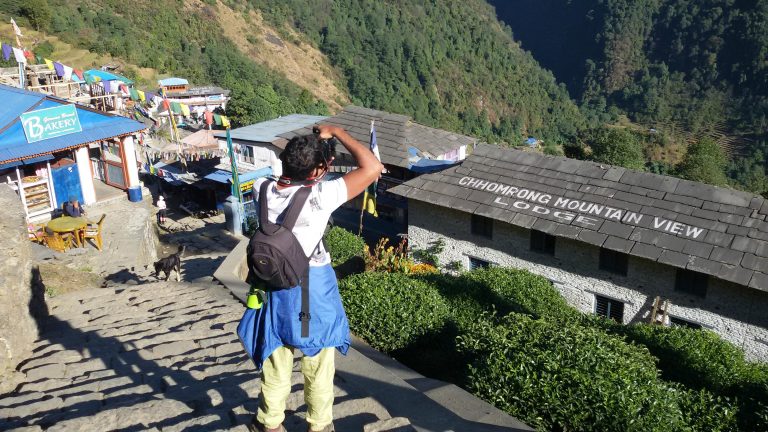
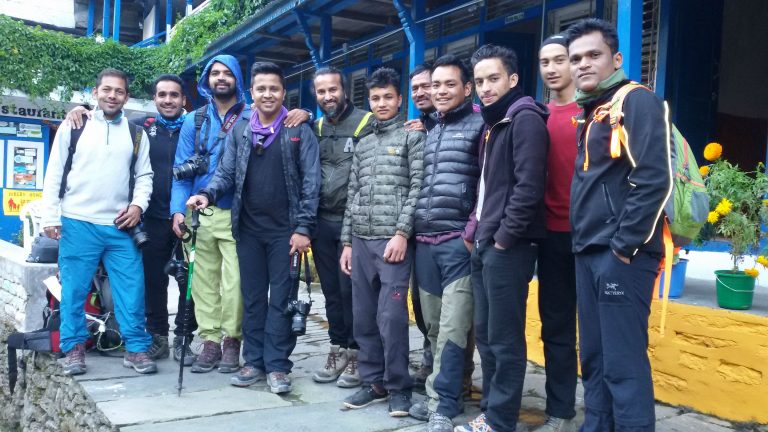
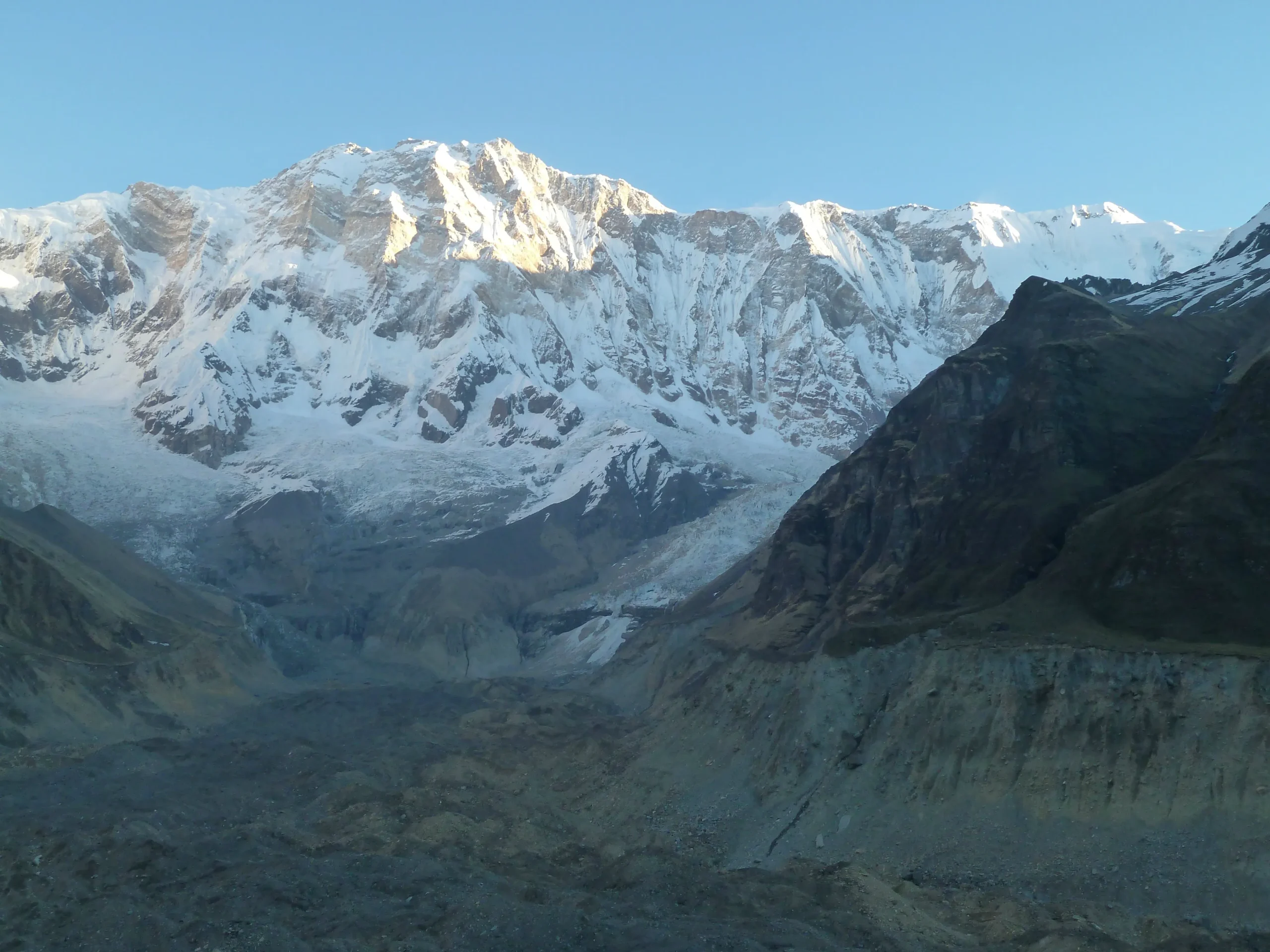
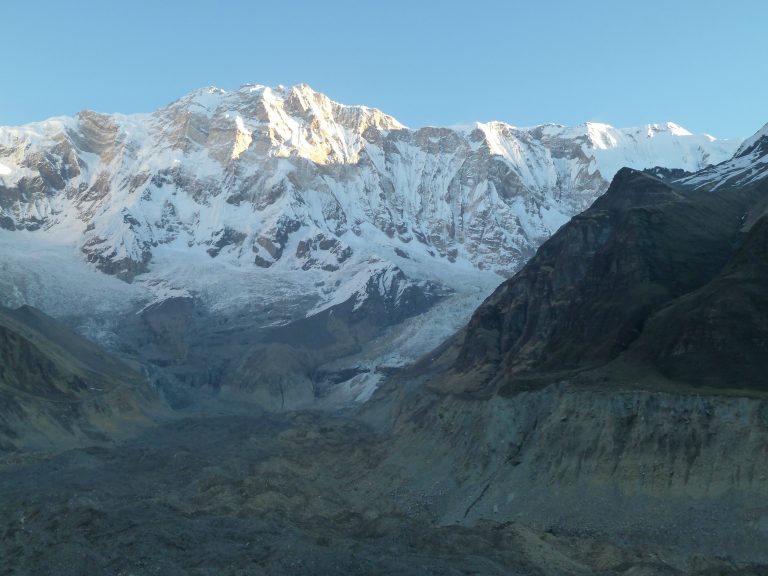
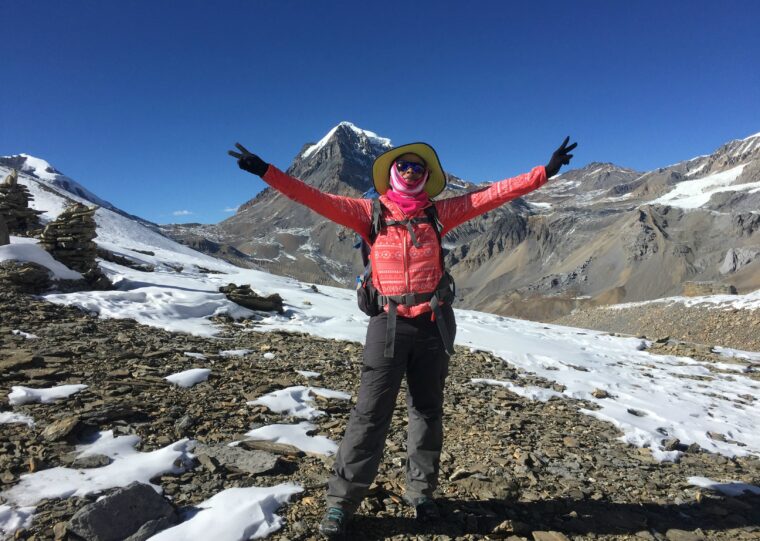
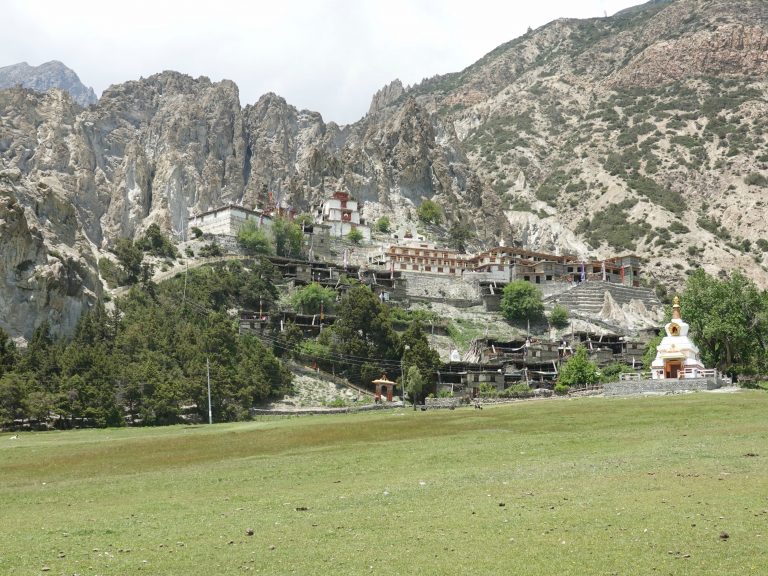
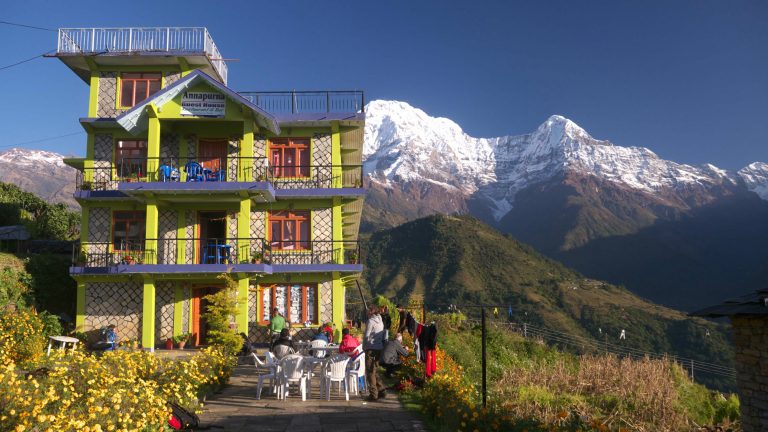
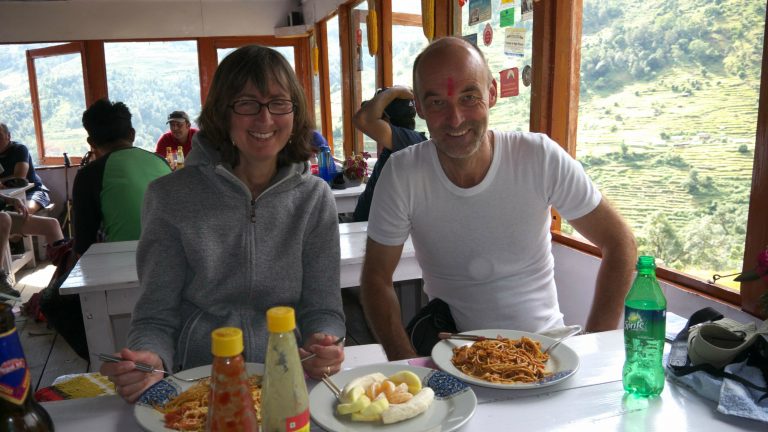
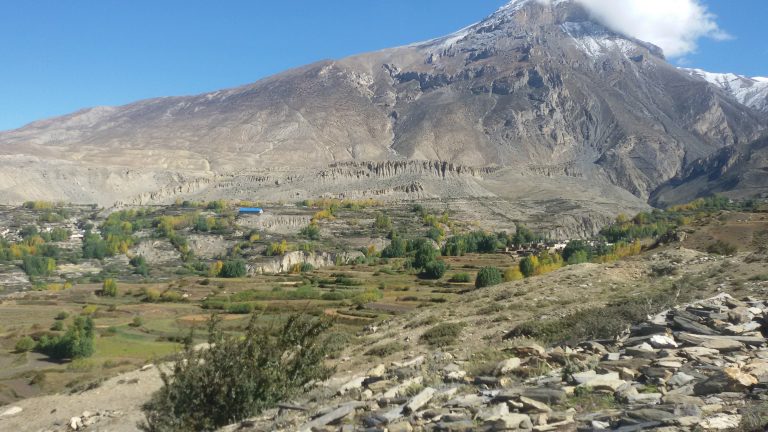
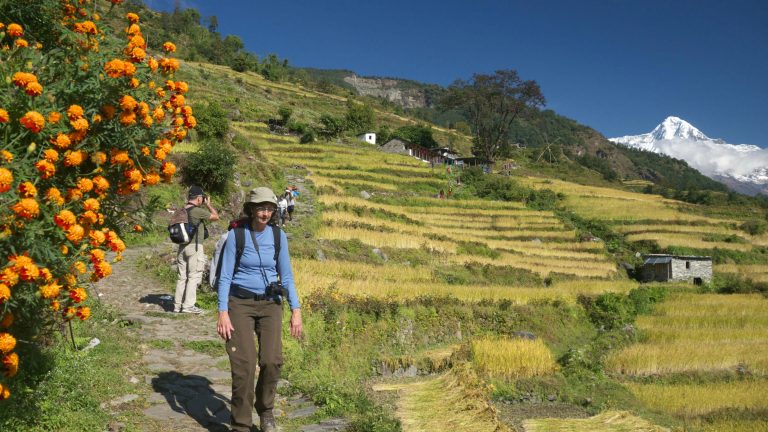
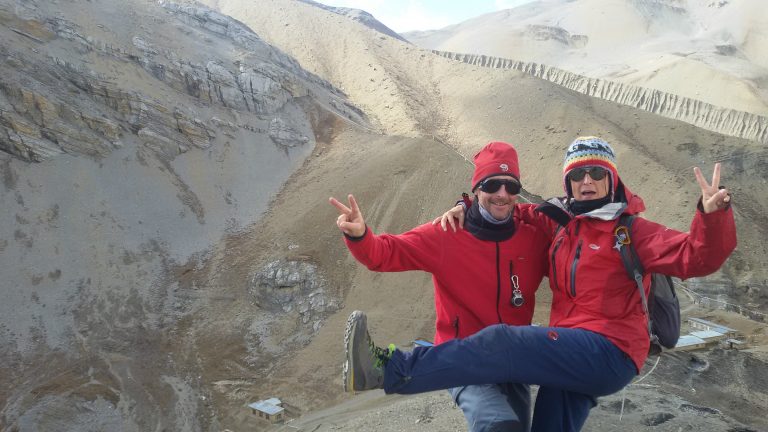
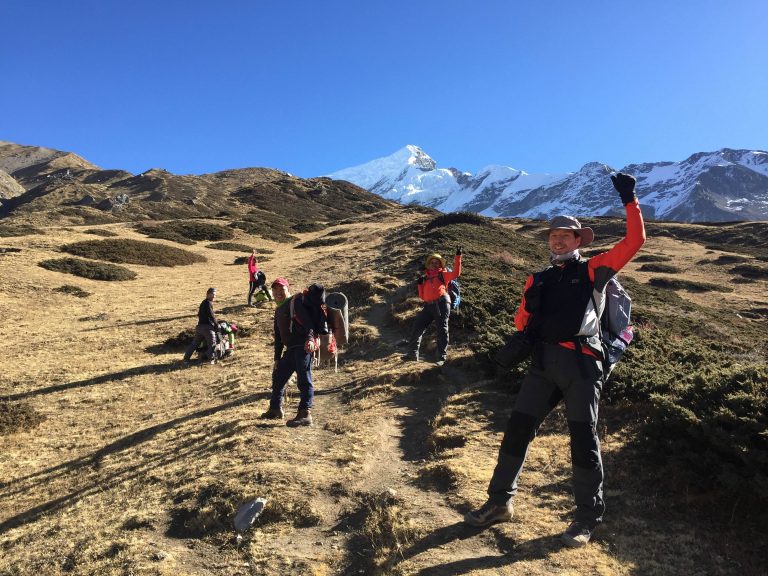
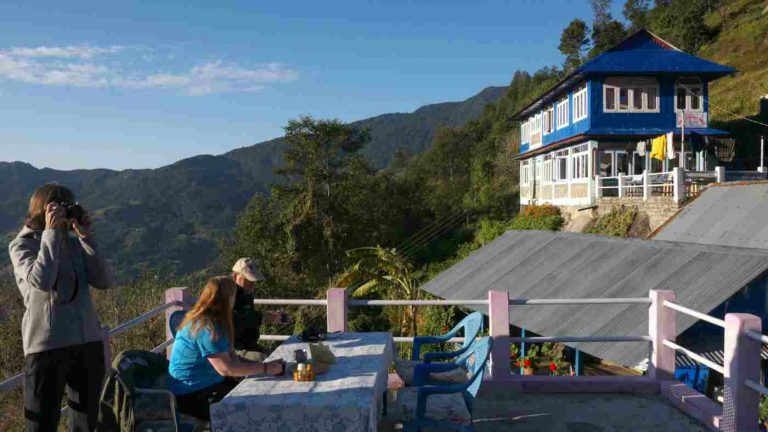
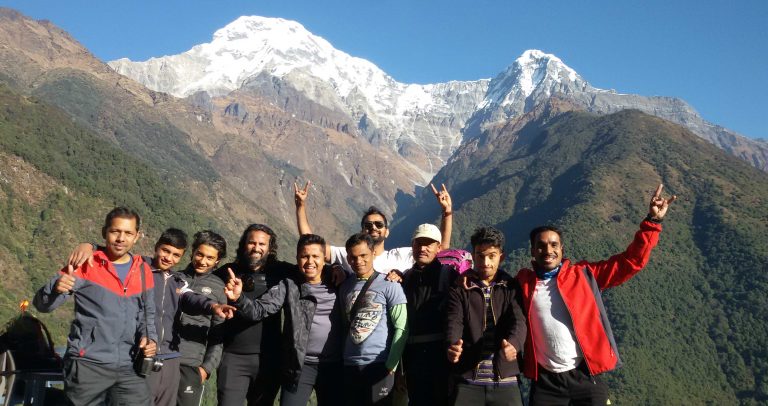
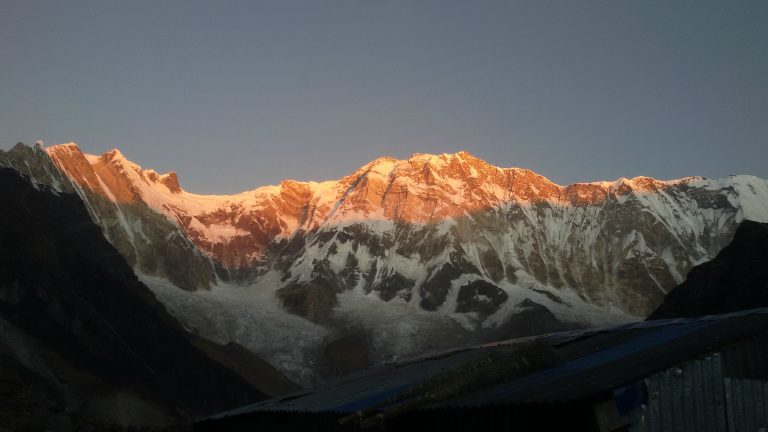
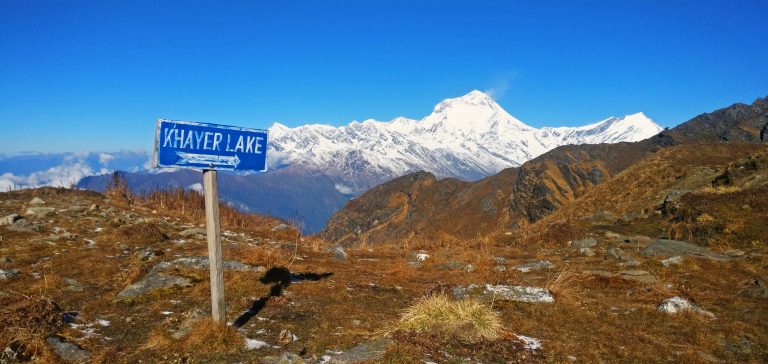
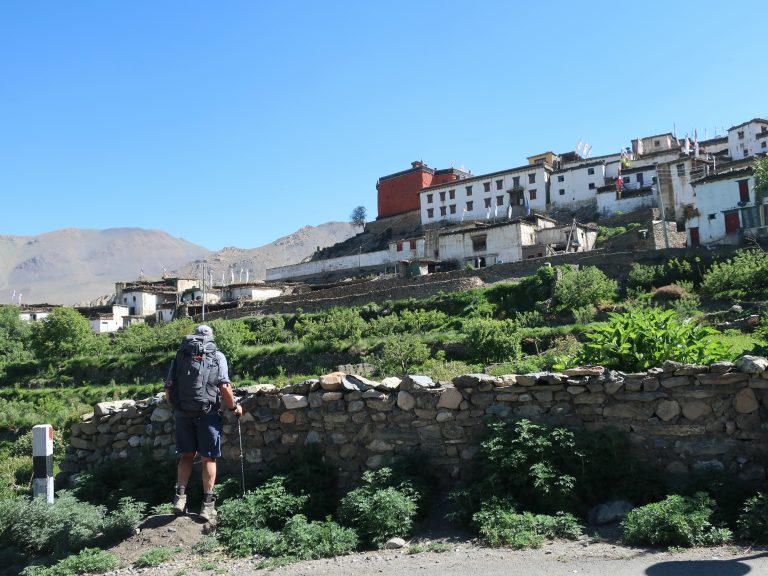
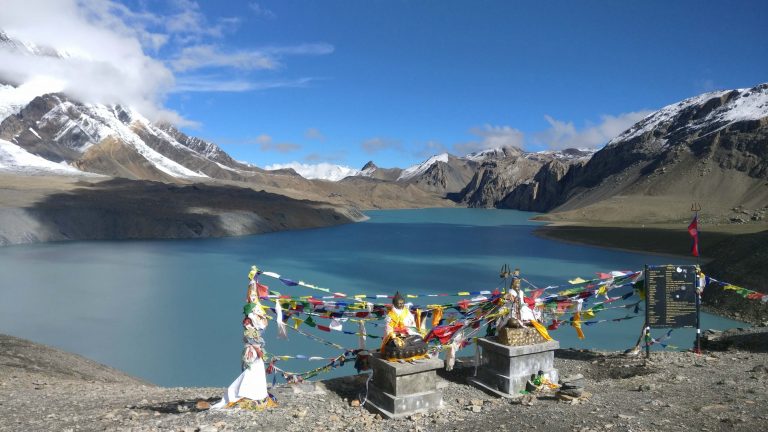
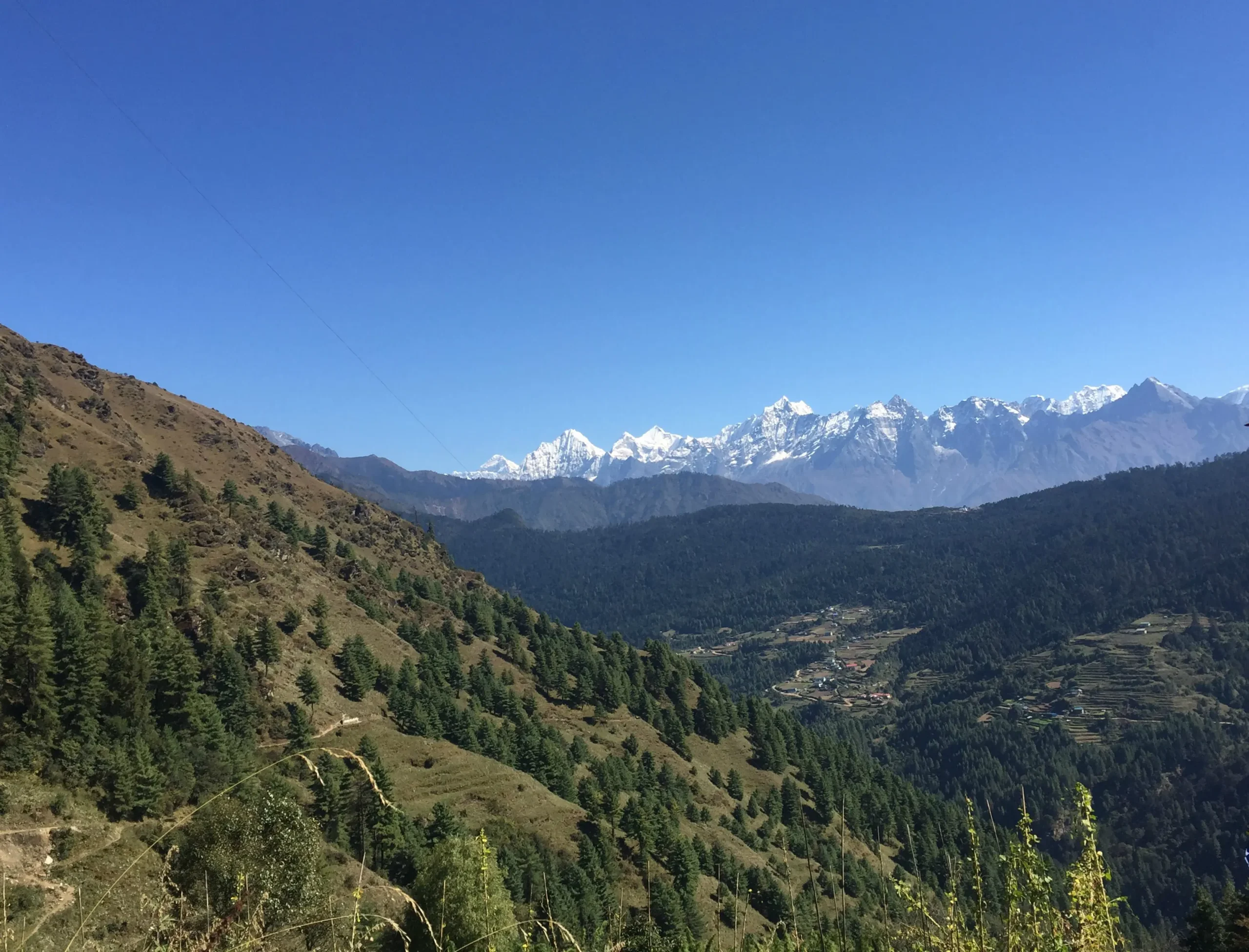
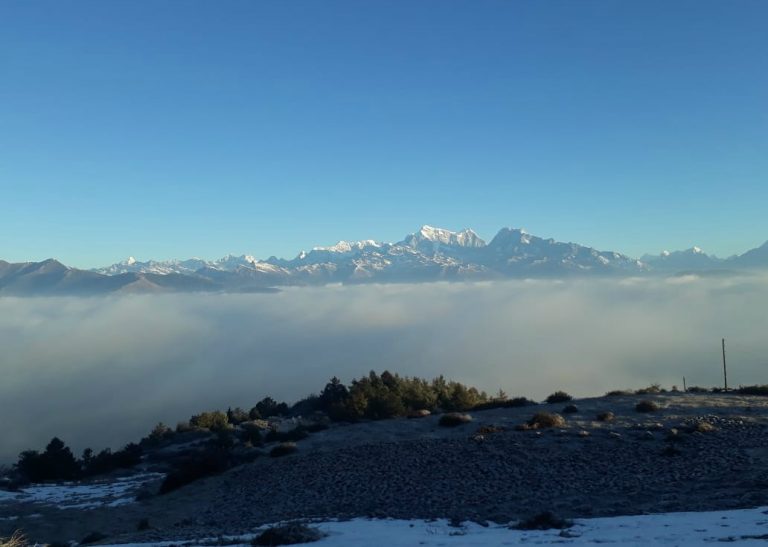
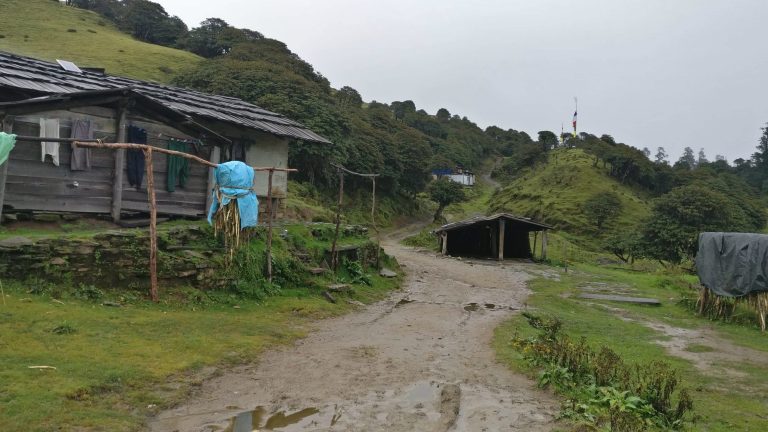
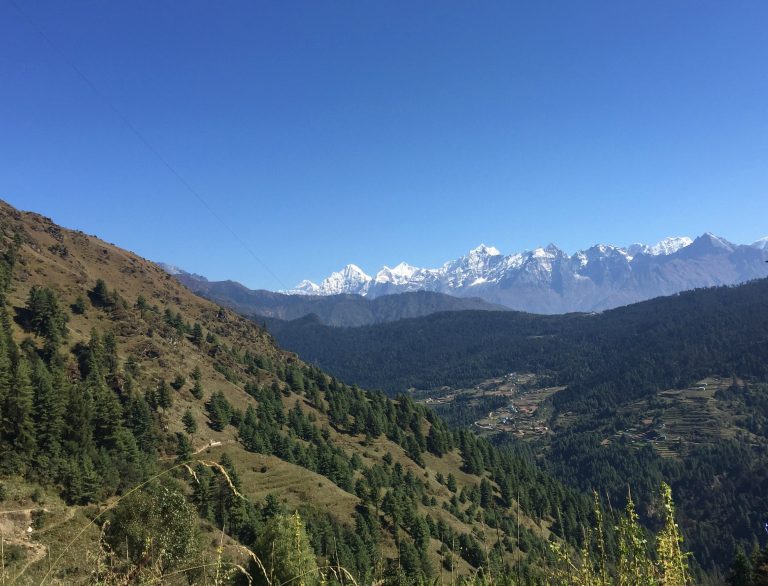
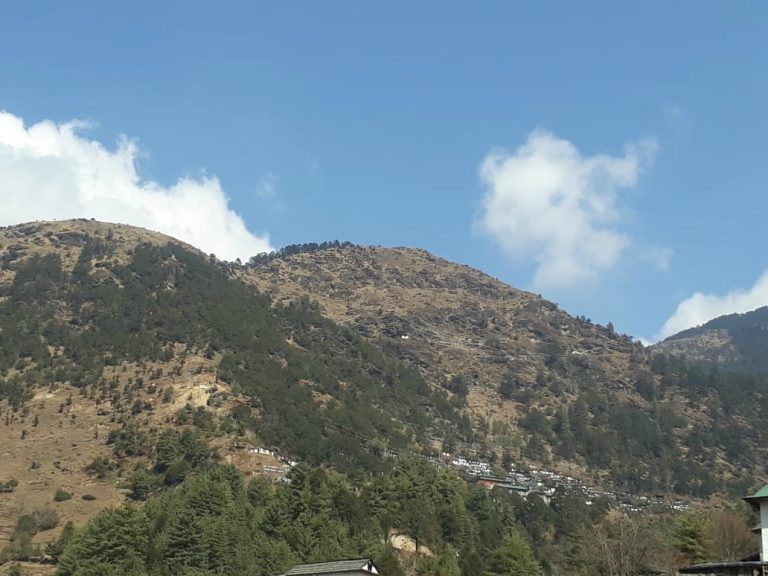
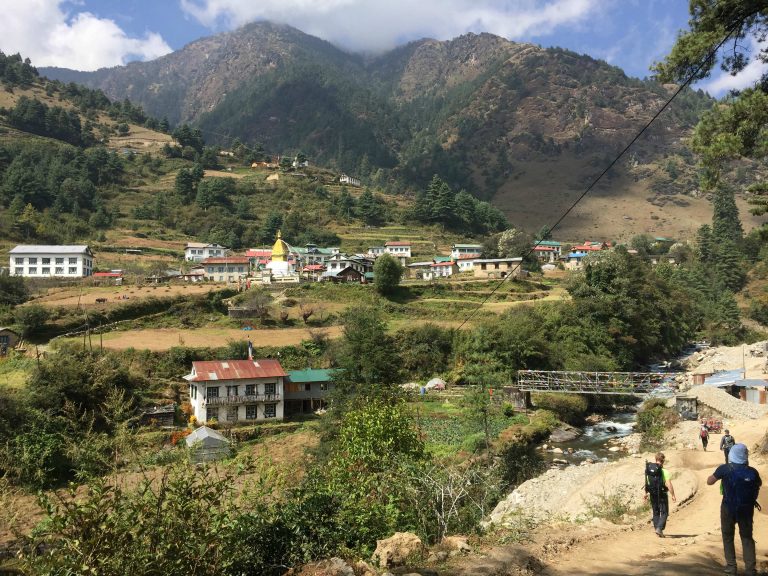
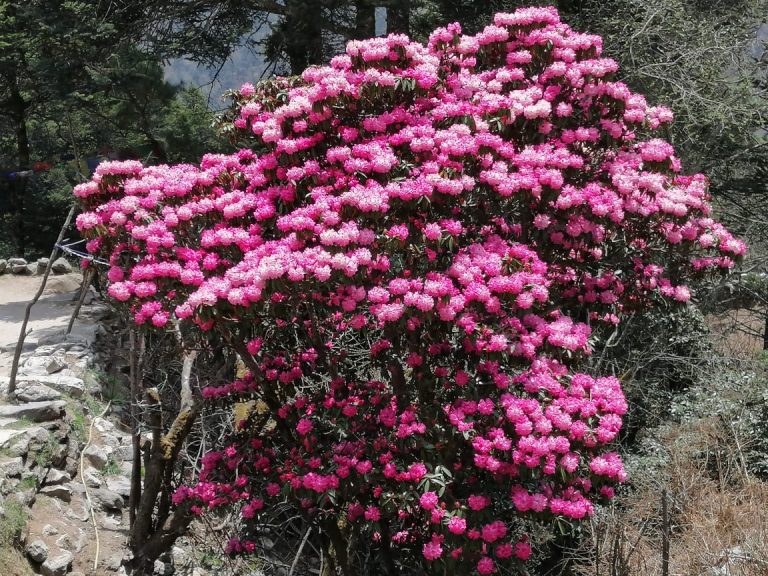
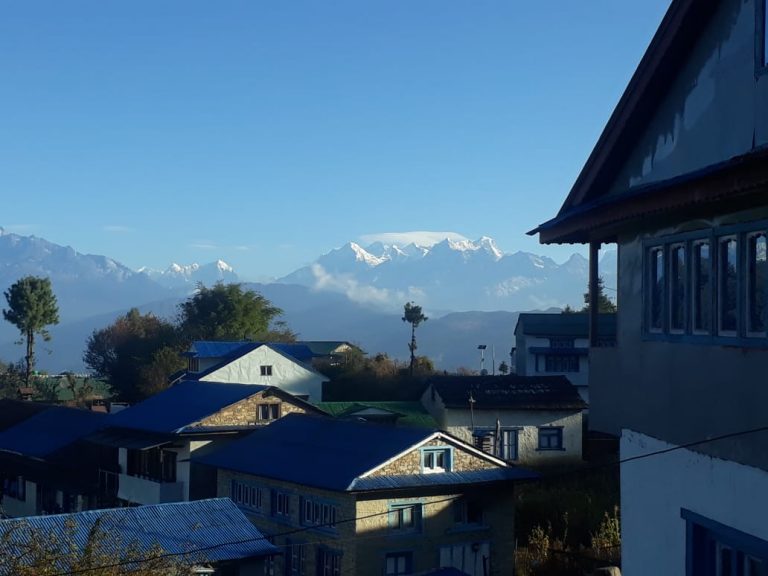
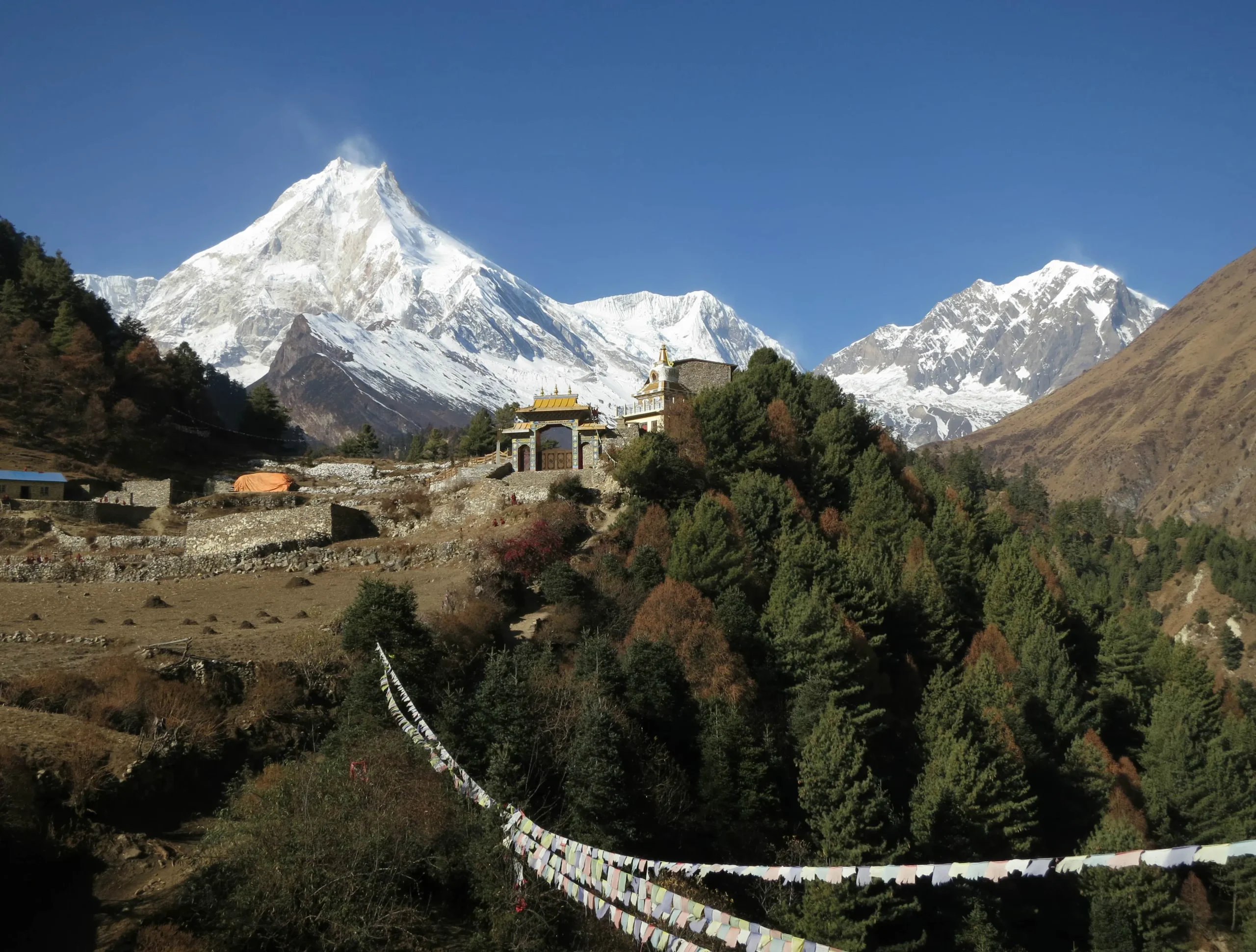
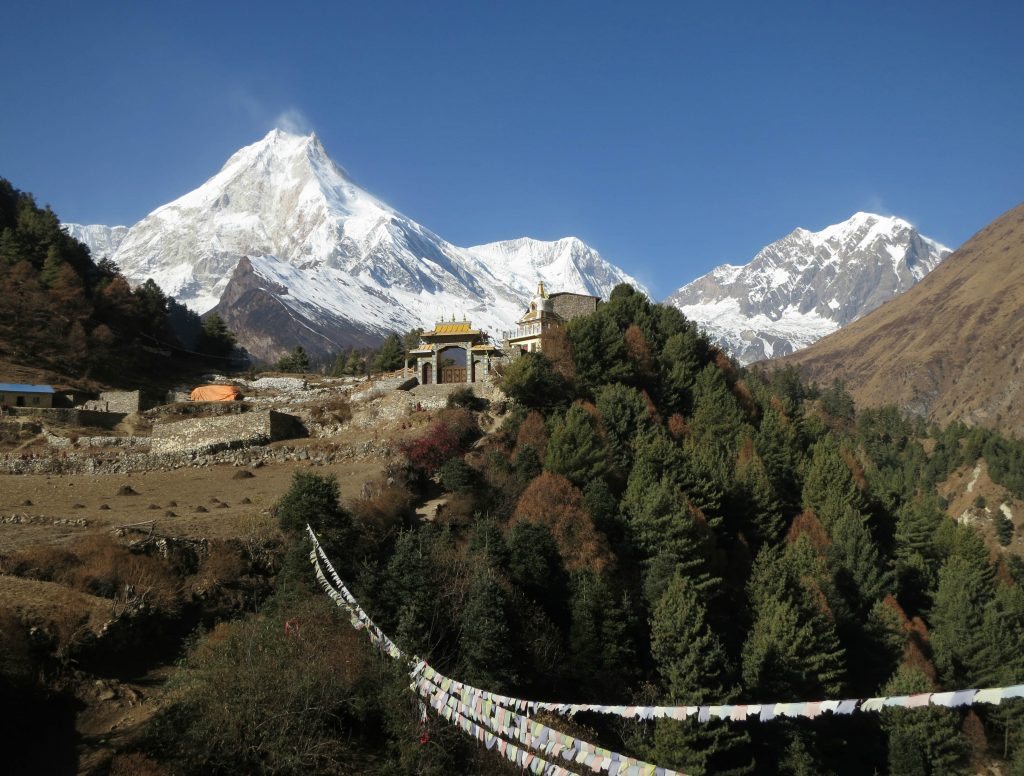
 (In between Bhimthang and Tilche after cross Larke pass (alt 5130m)
(In between Bhimthang and Tilche after cross Larke pass (alt 5130m)

